Six
INTERPRETIVE SITES
Work began on the Blue Ridge Parkway on September 11, 1935, near Cumberland Knob in Alleghany County, North Carolina. Now the parkway is the most visited park in the United States and runs for 469 miles. Construction of the parkway took over 52 years, and it was completed in 1987.
The parkway is marked with milepost interpretive markers beginning with 0 at the terminus of Skyline Drive in Virginia and ending at milepost 469 at Oconaluftee Village in Cherokee, North Carolina. Interpretive sites were saved throughout the 469 miles to showcase the Appalachian heritage and crafts.
There are many surviving examples of early European pioneer structures along the parkway. Starting at milepost 5.8 at the Humpback Rocks Visitor Center and Mountain Farm exhibit, the easy Mountain Farm Self-Guiding Trail takes one through a collection of 19th-century farm buildings where—in the summer months—there are often living history demonstrations.
Other interpretive cabins include the Trail Cabin (milepost 154.6), Puckett Cabin (milepost 189.9), Brinegar Cabin (milepost 238.5), Caudill Cabin (milepost 241), and Sheets Cabin (milepost 252.4), all of which are 19th-century log cabins illustrating the isolated existence of mountain residents. These cabins show the visitor the efforts of the original park planners to save log structures as opposed to other types of larger farmhouses they found. The Jesse Brown Farmstead (milepost 272.5) consists of a cabin, springhouse, and the relocated Cool Springs Baptist Church.
Brinegar Cabin, near milepost 238, is the only building on the National Register of Historic Places. This cabin became an interpretive site for demonstrating early American textile skills, such as weaving and dyeing.
There are 250 overlooks on the parkway. Each one has a sign stating the name of the overlook, elevation, and sometimes a description of the scene.
The most recent addition to the parkway is the Blue Ridge Music Center, which was constructed between the Fancy Gap milepost and the Galax milepost. Photographs and exhibits of early bluegrass bands in the area are highlighted in the visitor center. An amphitheater hosts different events throughout the tourist season.
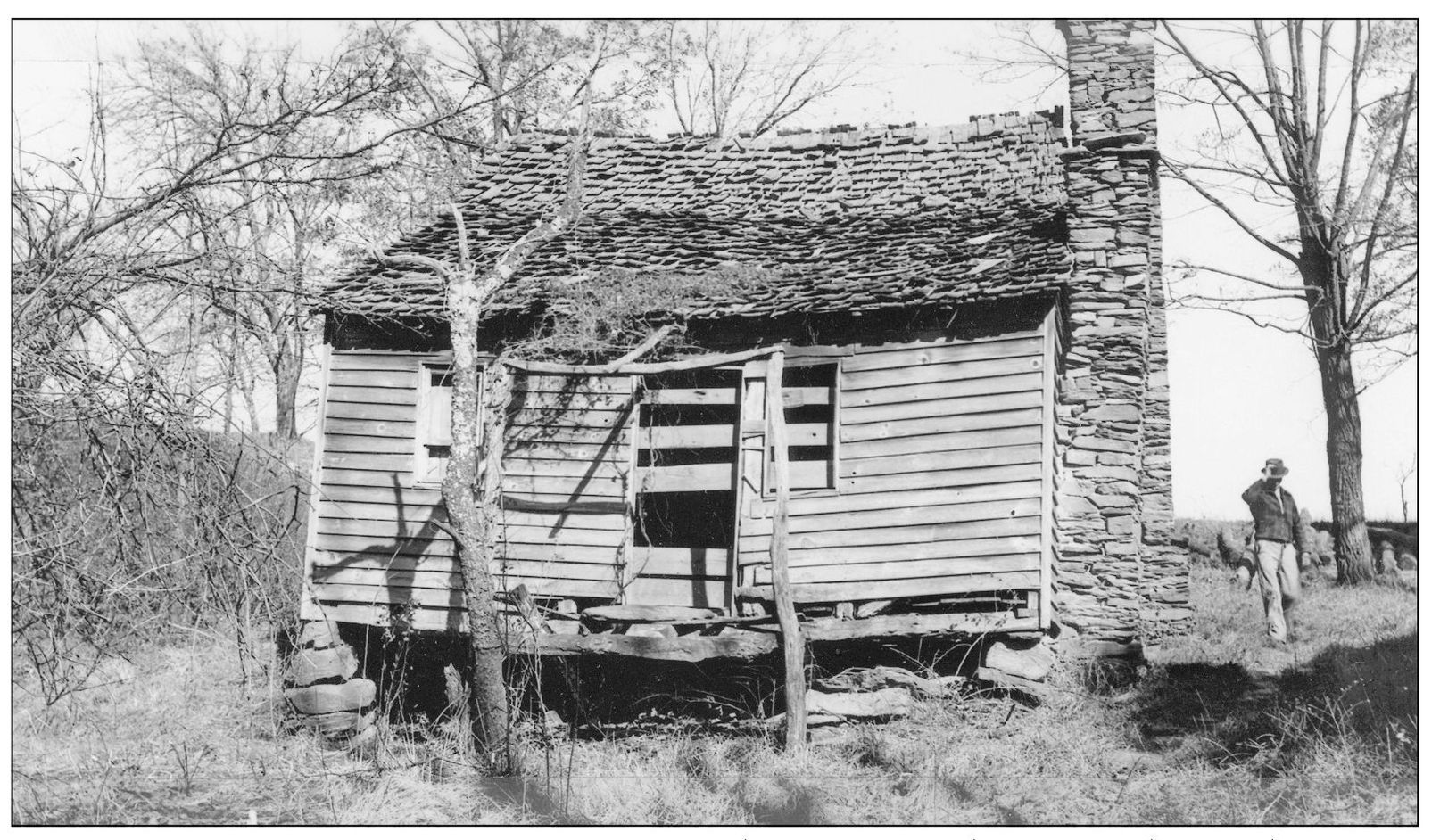
BRINEGAR CABIN, C. 1941. Before restoration, the Brinegar Cabin was in dire need of repair. Located at milepost 238.5, the cabin once belonged to Martin and Catherine Brinegar. They were self-sustained on the mountaintop with only a couple of crops that they sold at market each year. Their descendants meet each August and hold a community festival at the cabin. (Courtesy of the Blue Ridge Parkway Archives.)
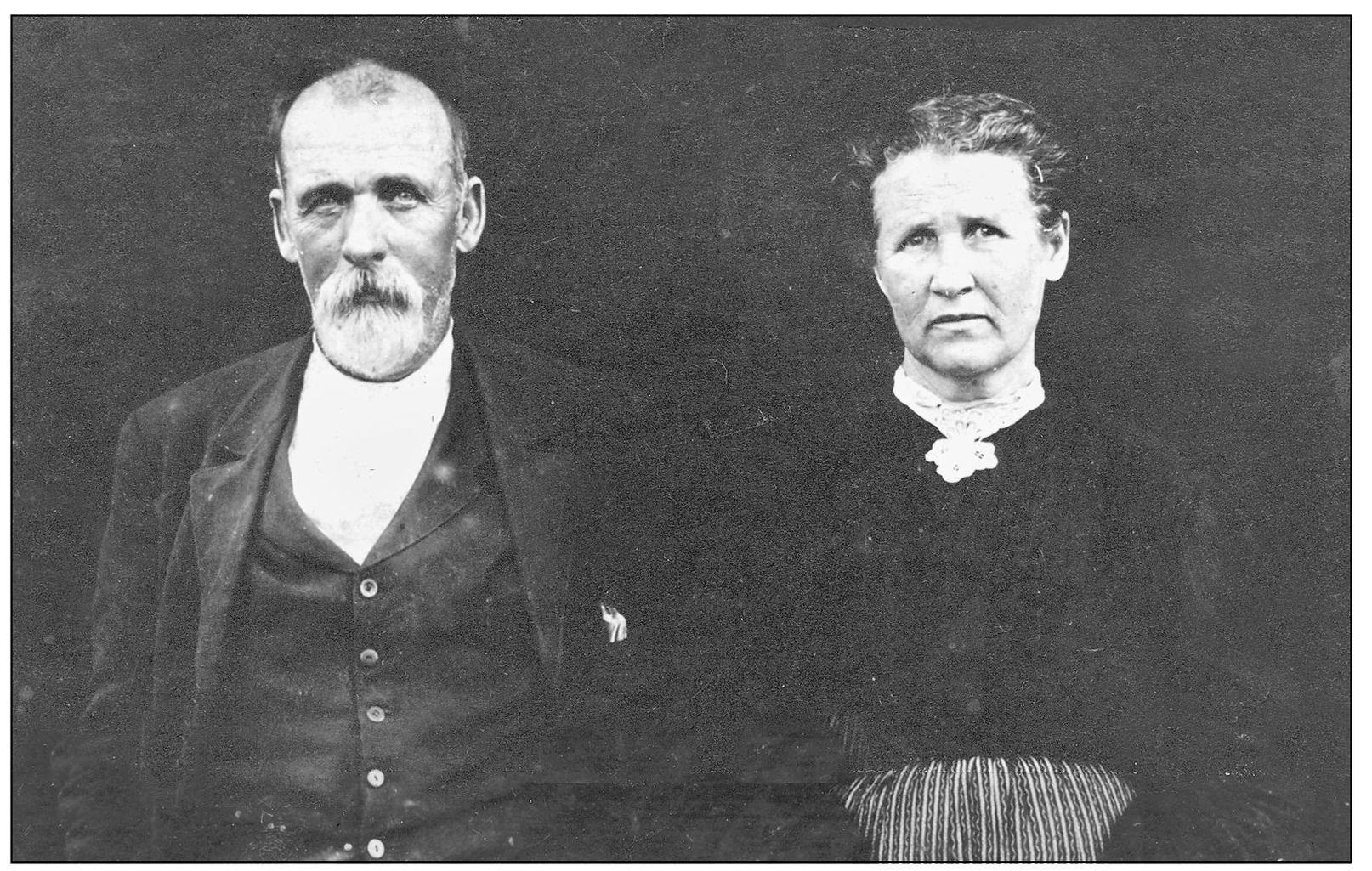
JAMES MARTIN AND CAROLINE JOINES BRINEGAR. Martin Brinegar was a descendant of the first Brinegar to immigrate to America from Europe. Martin and Caroline were married February 9, 1878, in Alleghany County, North Carolina. Their children were Susy Alice, Sarah Lurene, John William, and Mac Henderson Brinegar. (Courtesy of the Blue Ridge Parkway Archives.)
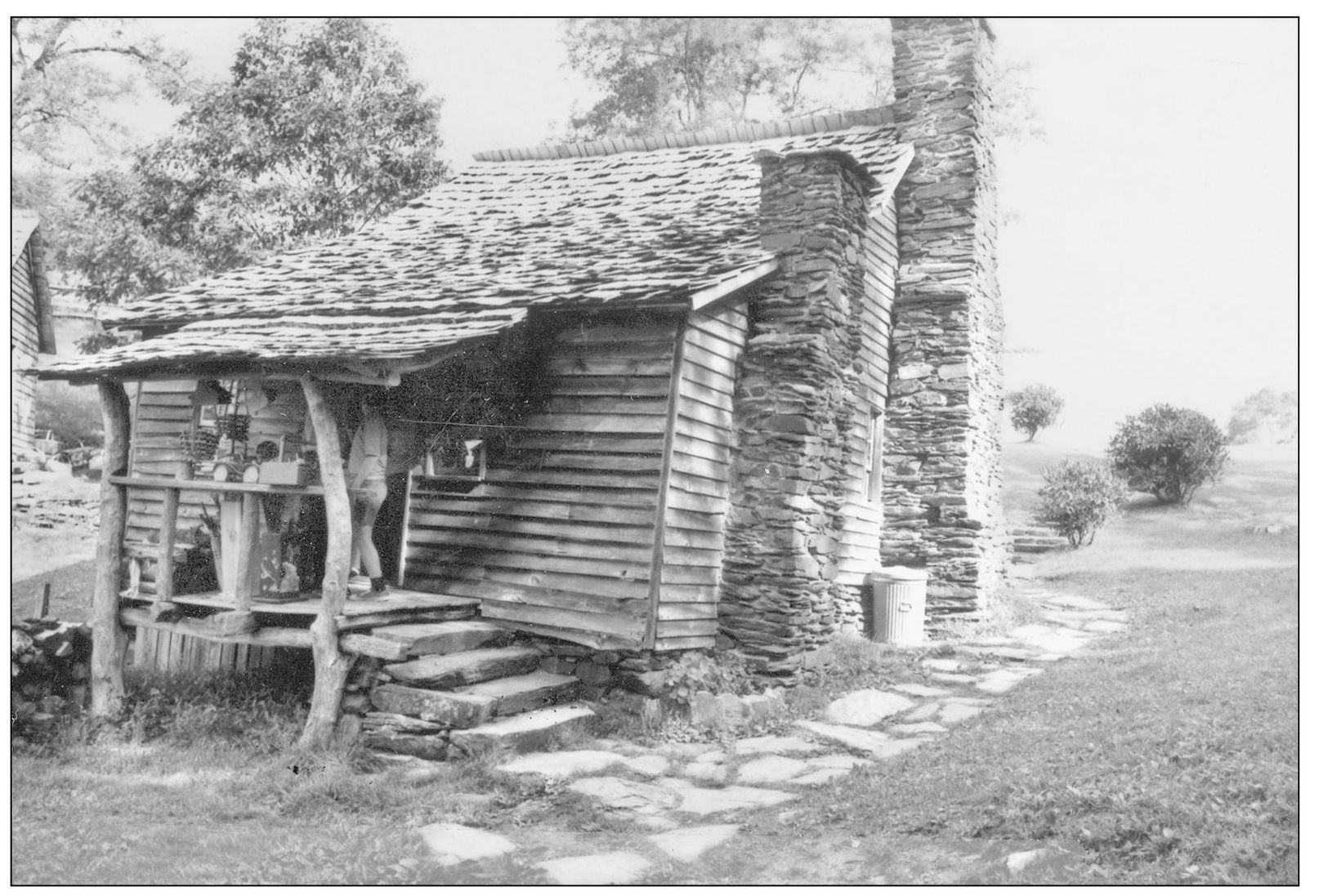
BRINEGAR CABIN AFTER RESTORATION. Now listed on the National Register of Historic Places, Brinegar Cabin was built around 1885 and restored and opened to the public in 1957. Several outbuildings were also included. This photograph was taken in August 1955 and shows the attention to detail given to the restoration. (Courtesy of the Blue Ridge Parkway Archives.)
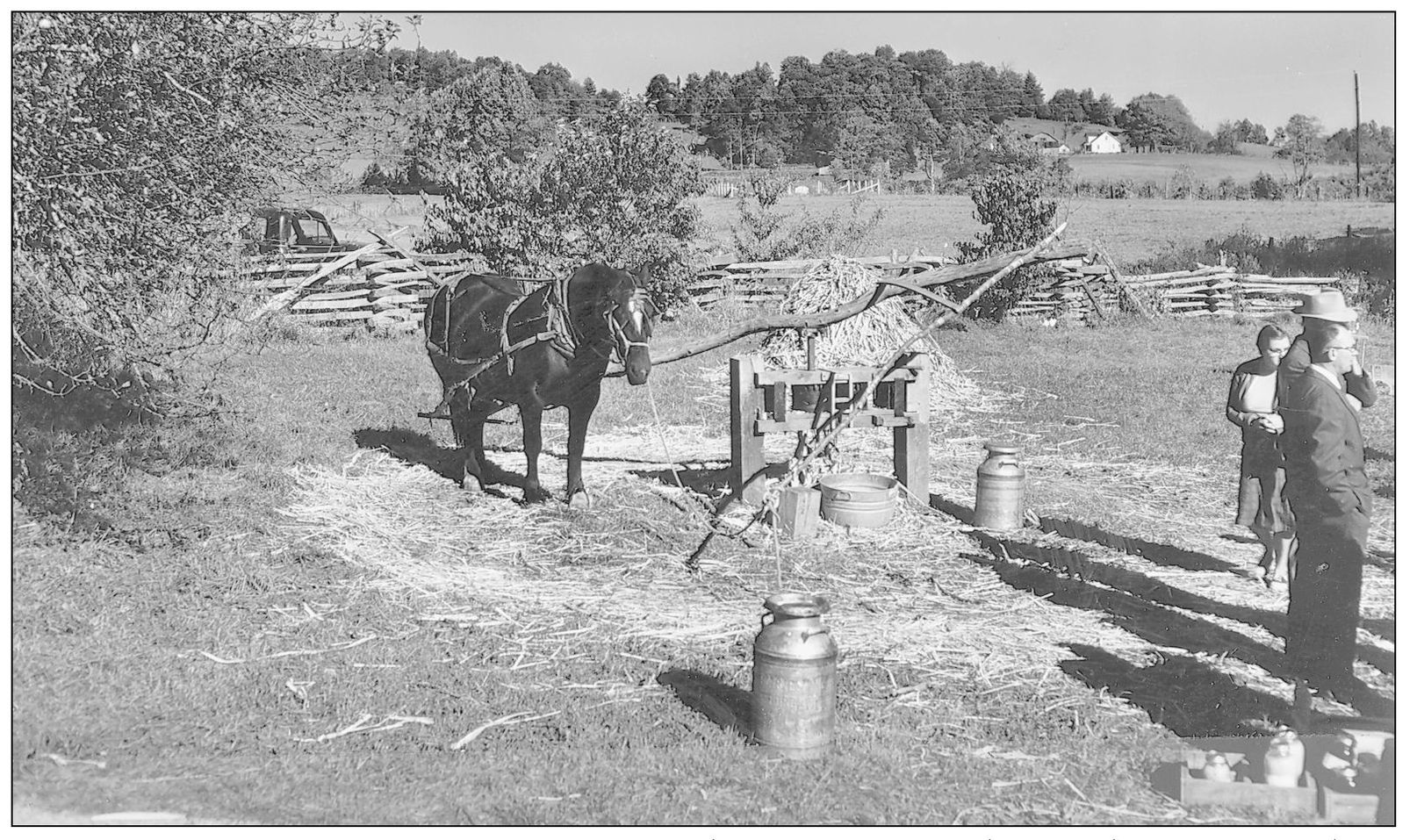
SORGHUM PRESS DEMONSTRATION. Sweet sorghum is a syrup made from the juice of sorghum cane. In years past, it was an important source of sweetener for breads, desserts, and drinks. During the 1850s, it came into prominence in the United States. By 1888, total U.S. production was 20 million gallons. (Courtesy of the Blue Ridge Parkway Archives.)
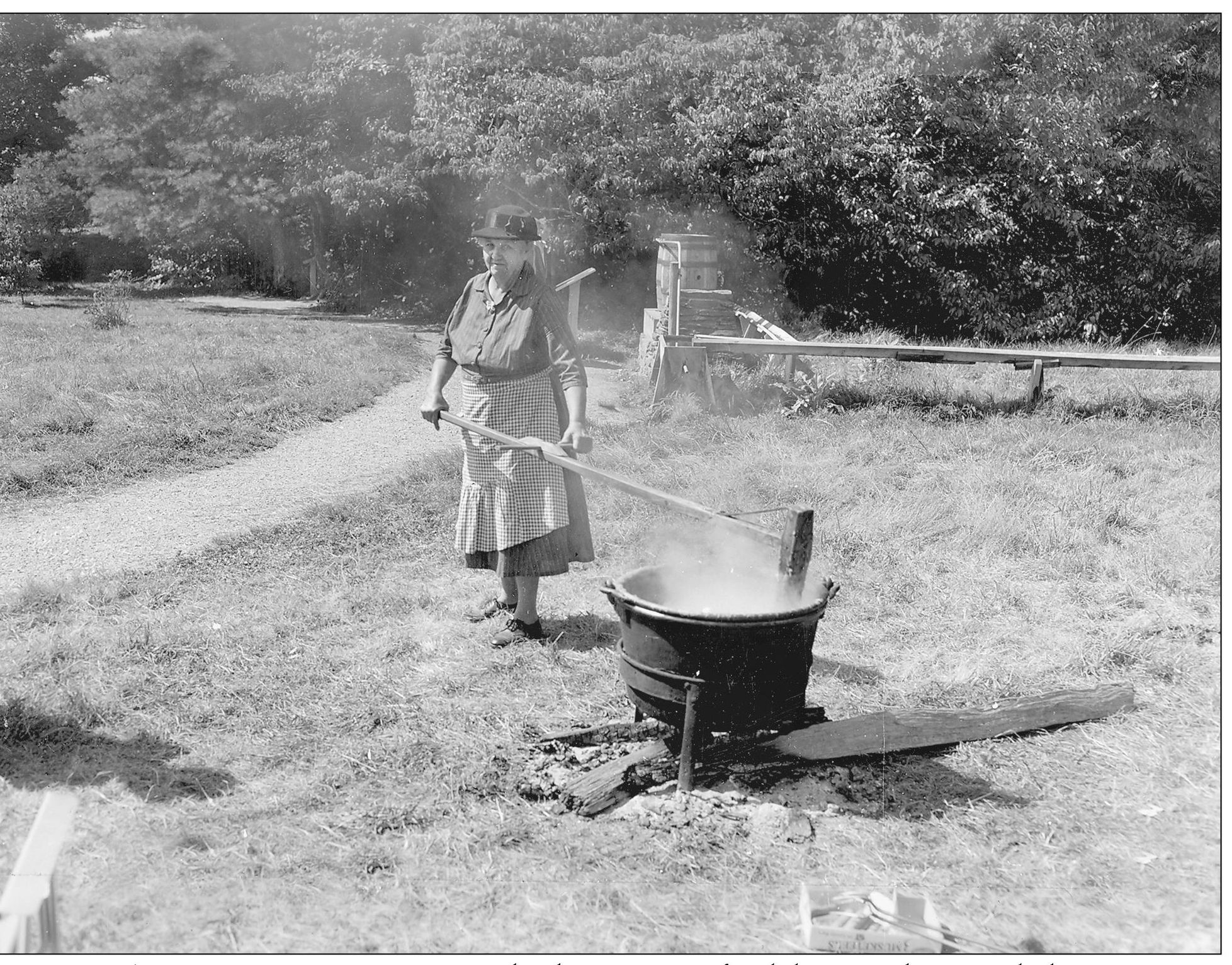
APPLE BUTTER DEMONSTRATION. This demonstration of apple butter production took place in October 1961 at Mabry Mill. Many days before making this spread, several gallons of apples have to be picked, peeled, and cooked to applesauce consistency. Once in the kettle, the solution of applesauce and sugar are cooked for about eight hours. Then the cinnamon flavoring is added before being transferred to jars. It was a popular way of using apples in Colonial America well into the 19th century. The term “butter” refers to the thick, soft consistency and its use as a spread for breads. Typically seasoned with cinnamon, cloves, and other spices, apple butter may be used as a side dish, an ingredient in baked goods, or as a condiment. The Pennsylvania Dutch often include it as part of their traditional seven sweets and seven sours dinner table array. In the Blue Ridge Mountains, it is a family event to make apple butter. Every family member can take part in the process. (Courtesy of the Blue Ridge Parkway Archives.)
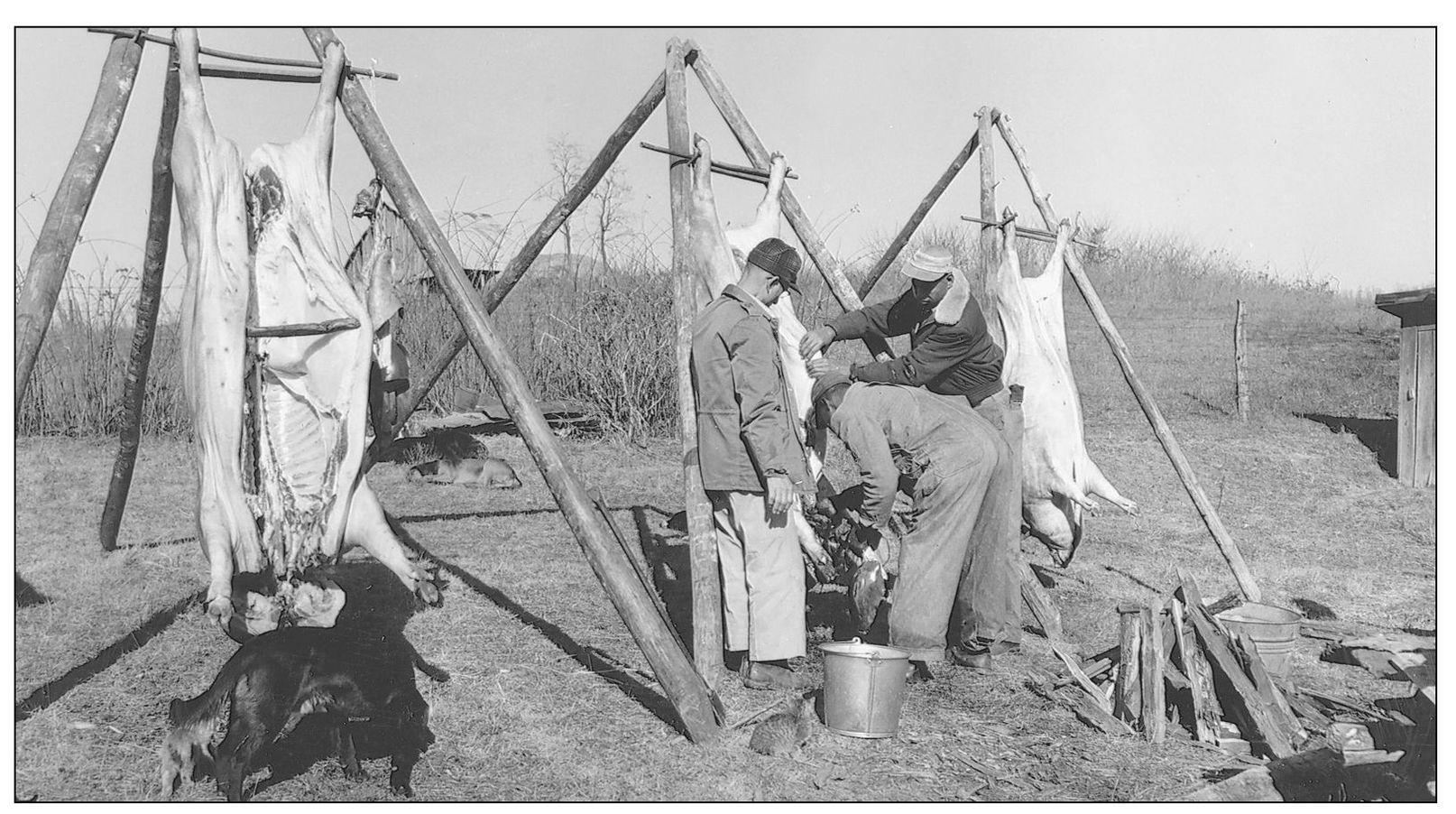
HOG KILLING IN 1953. Hogs provided meat and fats to the mountaineer. Hogs were butchered and sliced into roast, hams, and sausage. The fat was extracted and mixed with lye to make soap. Weather played a big part, as it has to be cold enough to preserve the meat but not freeze the meat. (Courtesy of the Blue Ridge Parkway Archives.)
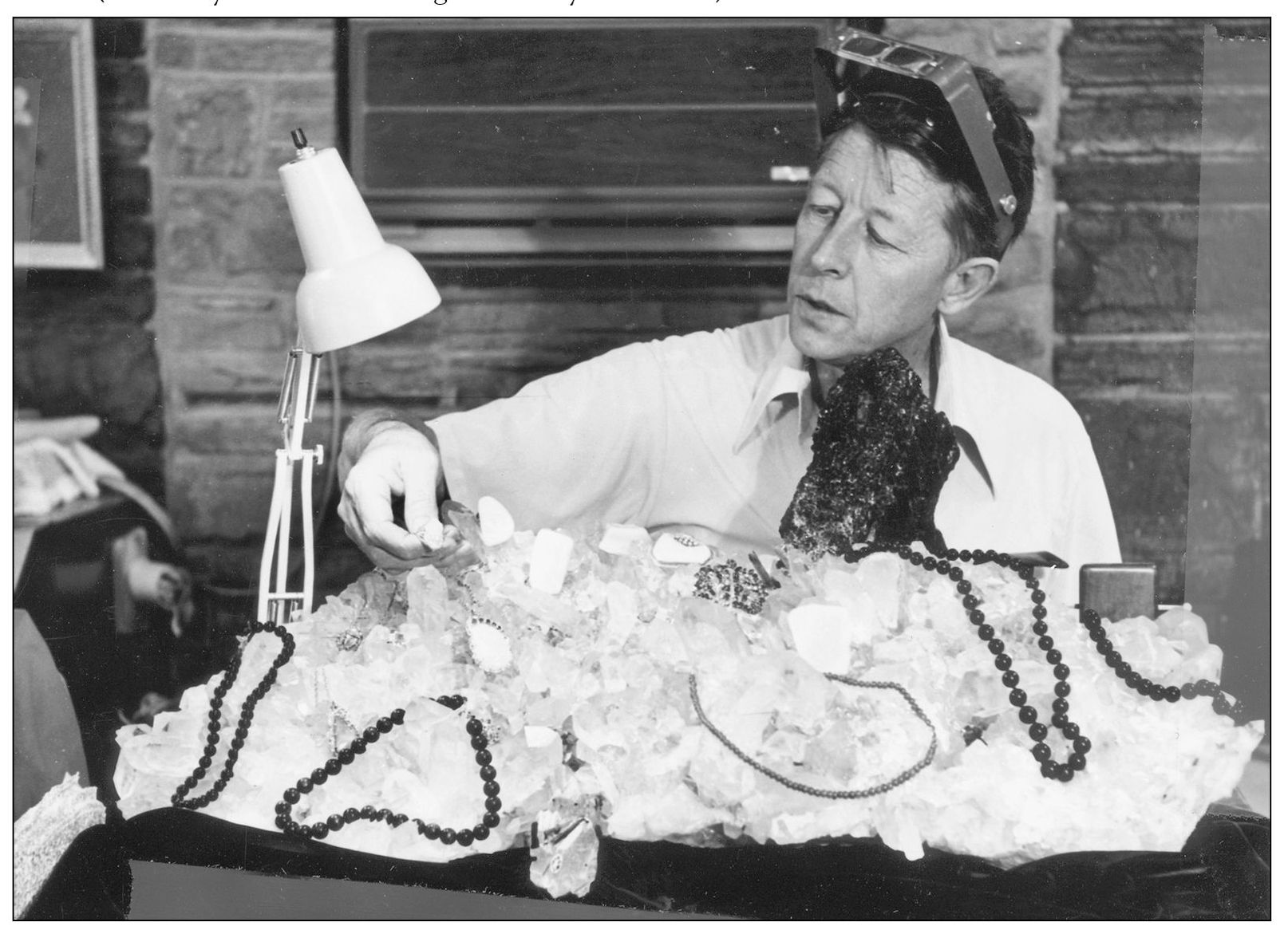
THE NORTH CAROLINA MINERALS MUSEUM. Located in Spruce Pine, North Carolina, at milepost 331, the North Carolina Minerals Museum was dedicated on June 17, 1955. This photograph of Junior McKinney was taken in May 1974. The museum provides an introduction to the importance of mining in the region. (Courtesy of the Blue Ridge Parkway Archives.)
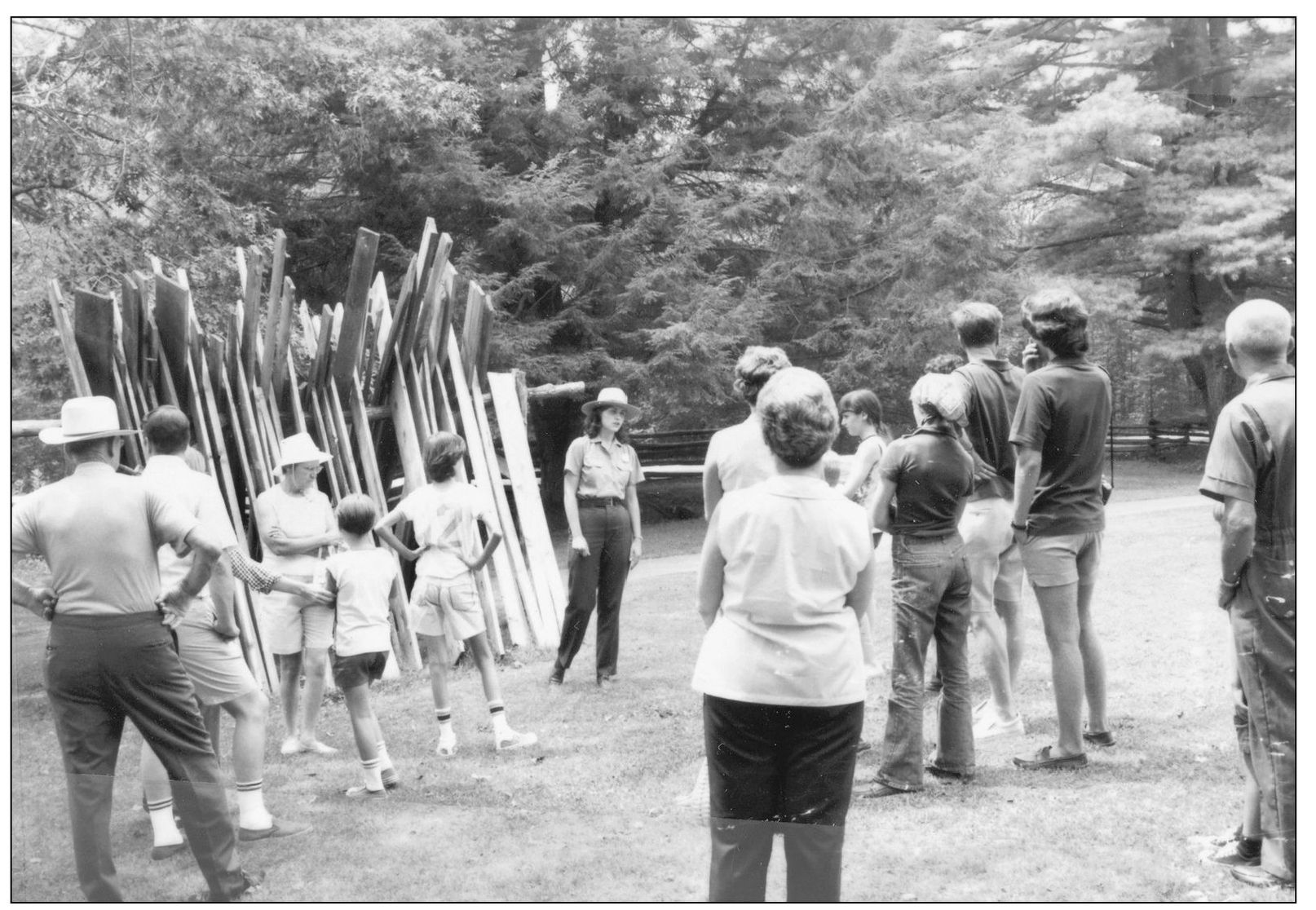
GUIDED TOUR OF MABRY MILL. Park ranger Brenda Bowers used to give guided tours of Mabry Mill. Here a demonstration of fence building and supplies is shown to an enthusiastic crowd of visitors. In August 1975, the parkway was a very popular vacation destination. (Courtesy of the Blue Ridge Parkway Archives.)
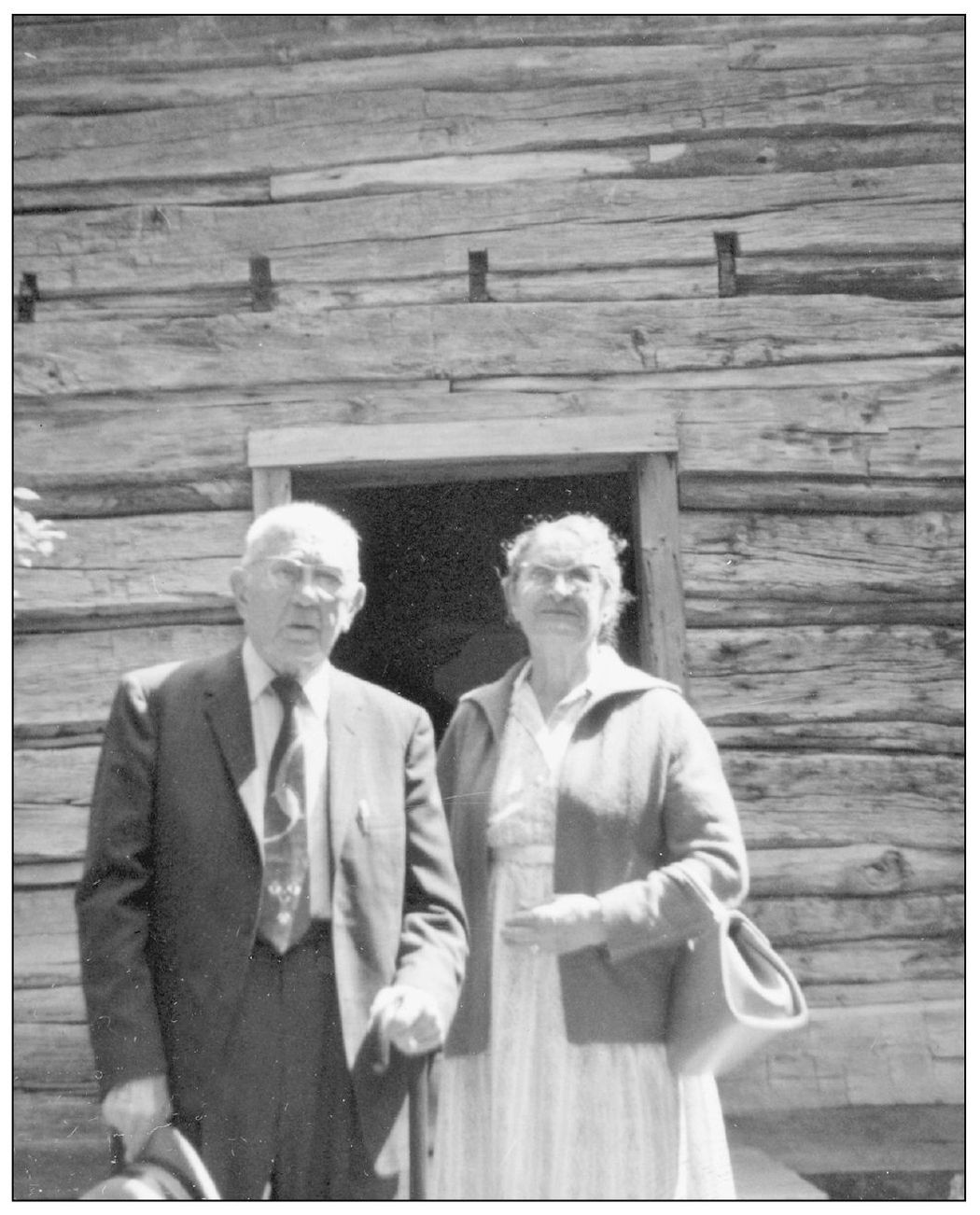
MR. AND MRS. ROSCOE MATTHEWS. This photograph was published in the March 14, 1957, Galax Gazette. The Matthewses donated the family log cabin to the park for demonstrations. The Mabry house was destroyed before the mill was reopened and was replaced with the Matthews Cabin. (Courtesy of the Blue Ridge Parkway Archives.)
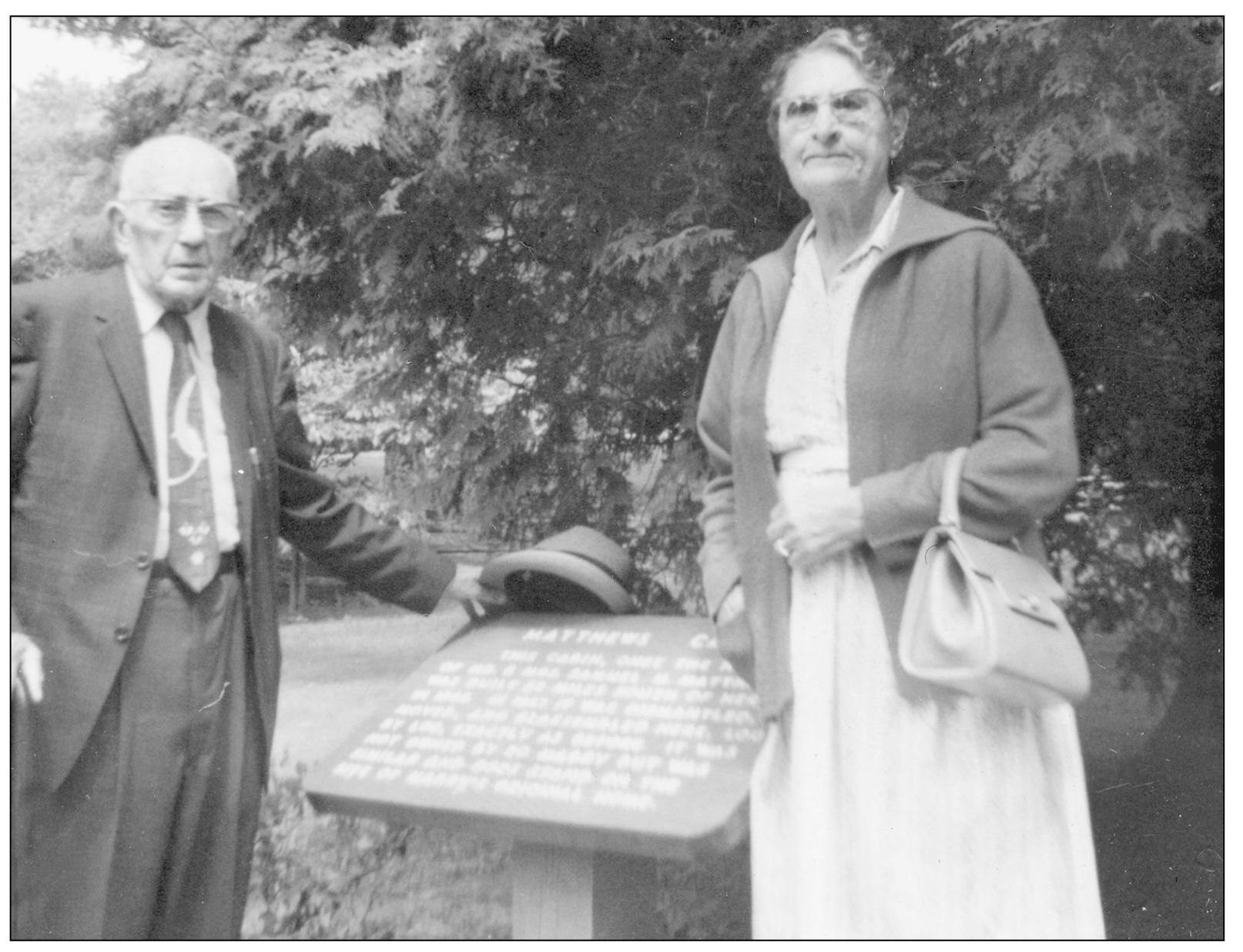
MR. AND MRS. ROSCOE MATTHEWS WITH SIGN. The log cabin donated by the Matthewses was built in 1869 by Samuel Monroe and Elizabeth Ann Matthews in the Mount Lebanon community of Carroll County, Virginia. The building was moved to the parkway in October 1956. (Courtesy of the Blue Ridge Parkway Archives.)
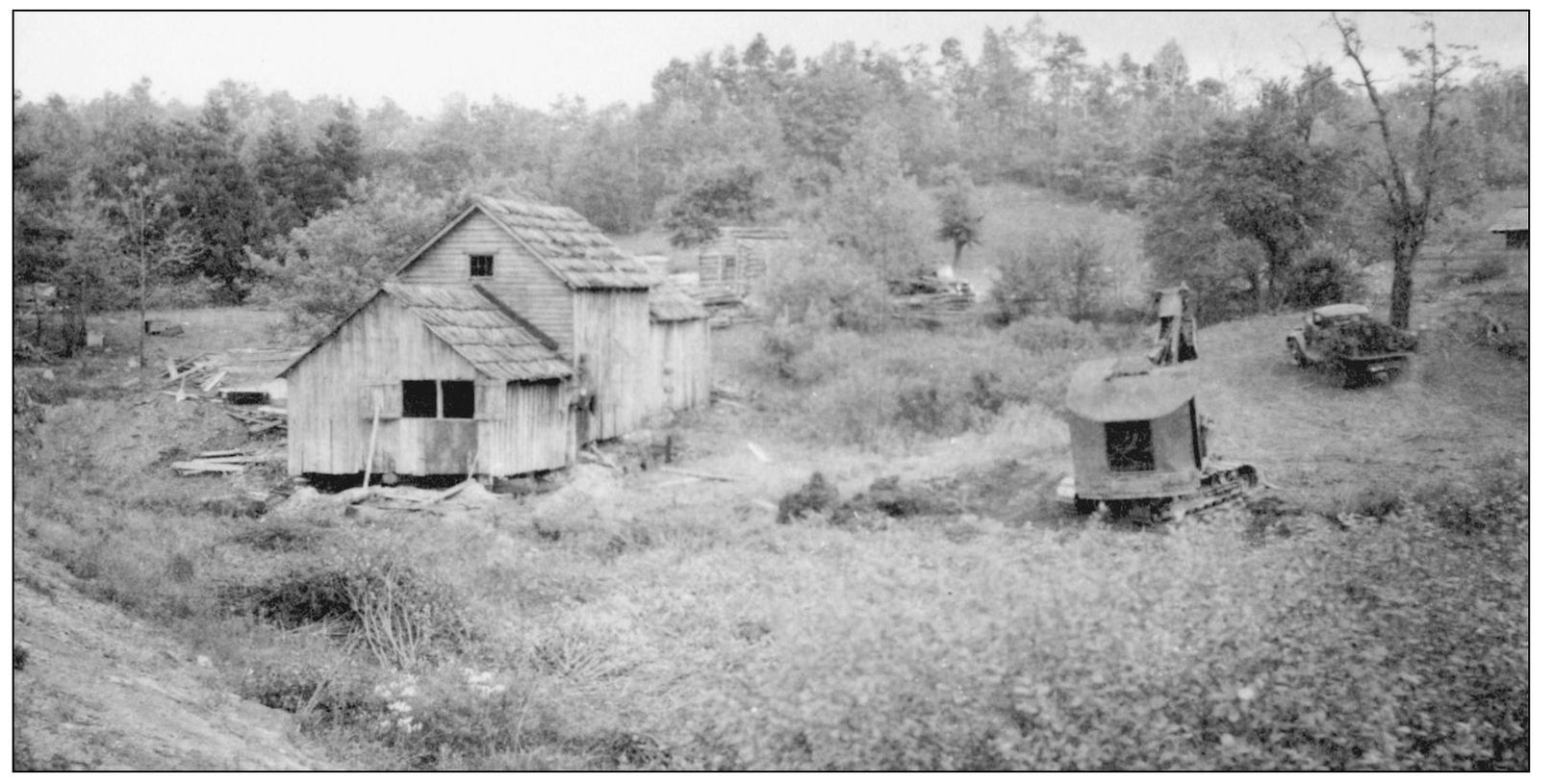
EARLY RECONSTRUCTION OF MABRY MILL. Reconstruction of Mabry Mill began in the 1940s. Here is a track shovel that is going to be used to dig out the pond in front of the wheel. The old white clapboard house of the Mabrys had already been destroyed, and the Matthews Cabin is being erected in the background. (Courtesy of the Blue Ridge Parkway Archives.)
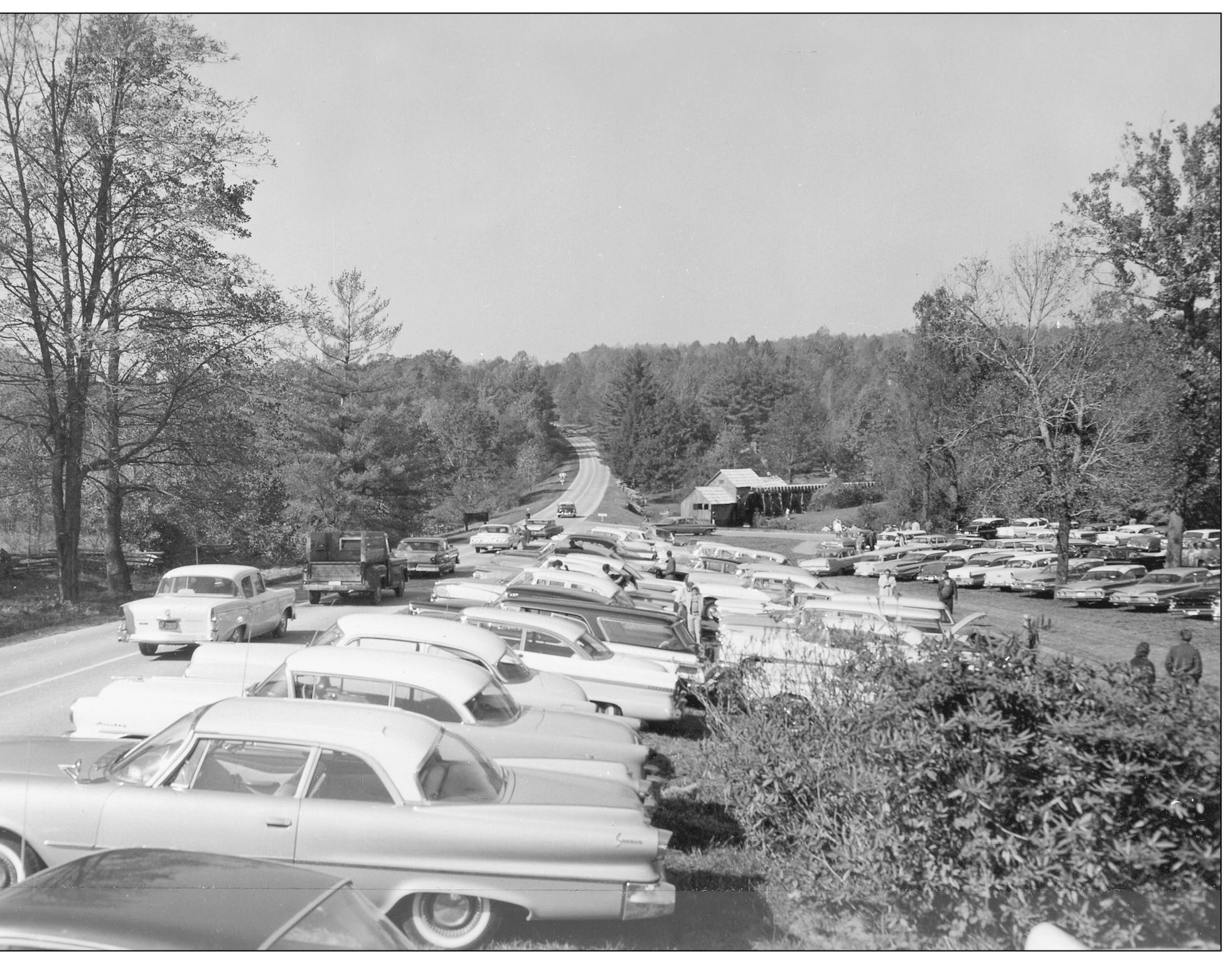
TRAFFIC JAM AT MABRY MILL. Riders along the Blue Ridge Parkway looking at the fall colors in October 1961 caused a traffic jam at Mabry Mill. All of the parking lots were full. One can smell the country ham and apple butter just looking at this photograph. (Courtesy of the Blue Ridge Parkway Archives.)
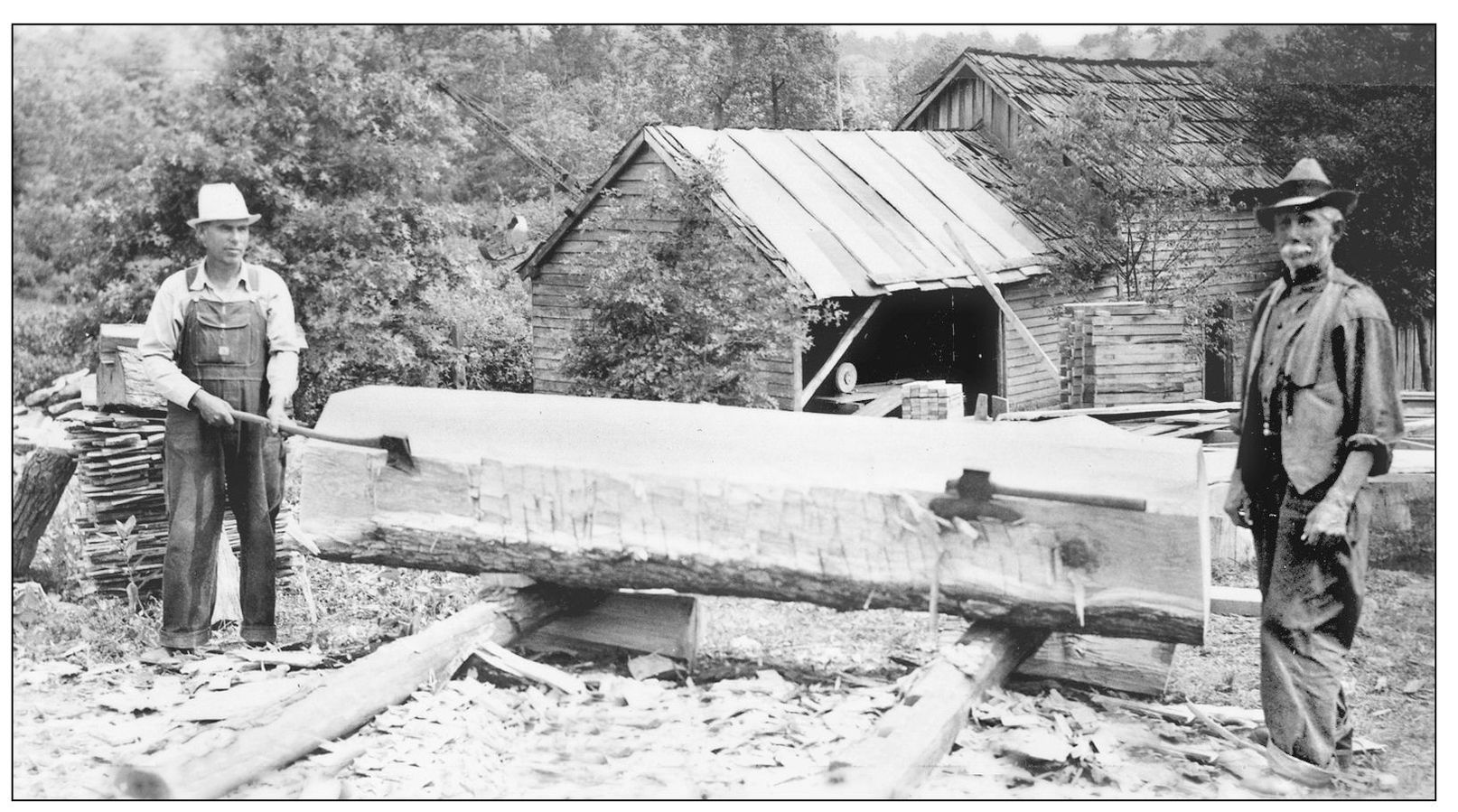
WATER-WHEEL SHAFT. In June 1942, a 30-inch timber was cut for a water-wheel shaft. It was hand hewn by a craftsman working on the restoration project. The Mabry Mill, located at milepost 176.1, fell into disrepair after E. B. Mabry passed away. The mill went into operation in 1905 and suspended operation in 1935. (Courtesy of the Blue Ridge Parkway Archives.)
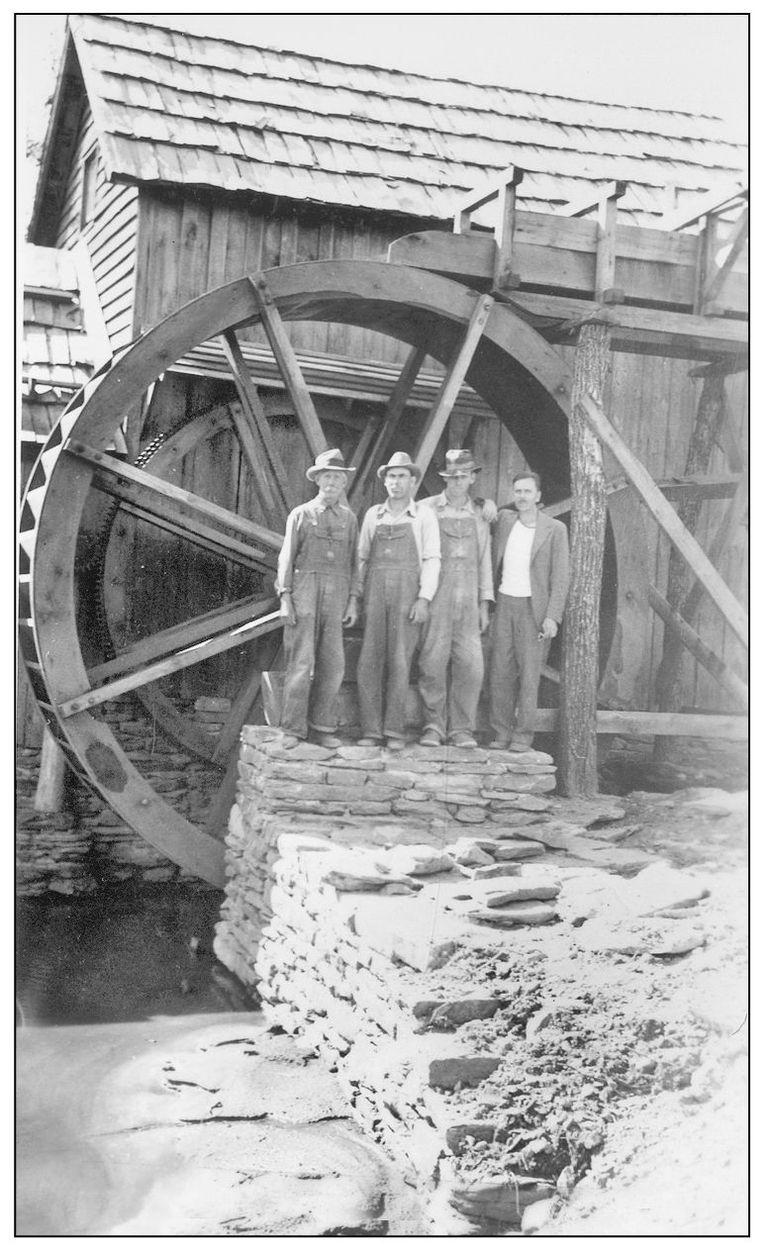
COMPLETED WATER WHEEL. In July 1942, this photograph was taken of the men who rebuilt the water wheel. From left to right are men identified only as Hylton, Goad, Scott, and McCarter. Because of their skills and craftsmanship, Mabry Mill is one of the most photographed mills in the world. (Courtesy of the Blue Ridge Parkway Archives.)
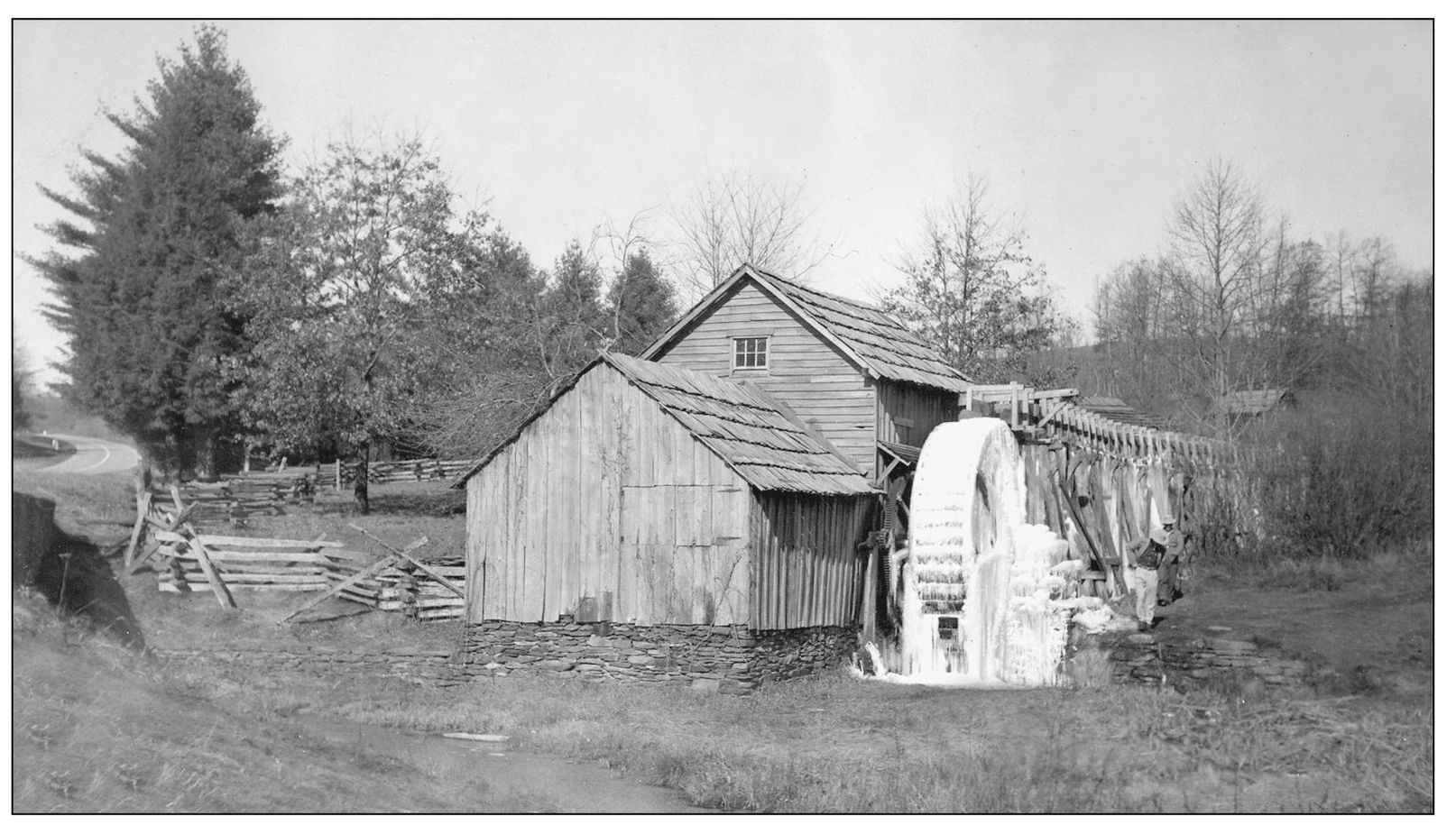
WINTER AT MABRY MILL. This photograph was taken in the cold of winter. Ice had frozen on the water wheel and flume. Before the mill opened to the public, the small lake had to be built. At the time of this photograph, the lake had not been developed. Mabry Mill, a historic gristmill, was opened to the public in the 1950s. (Courtesy of the Blue Ridge Parkway Archives.)
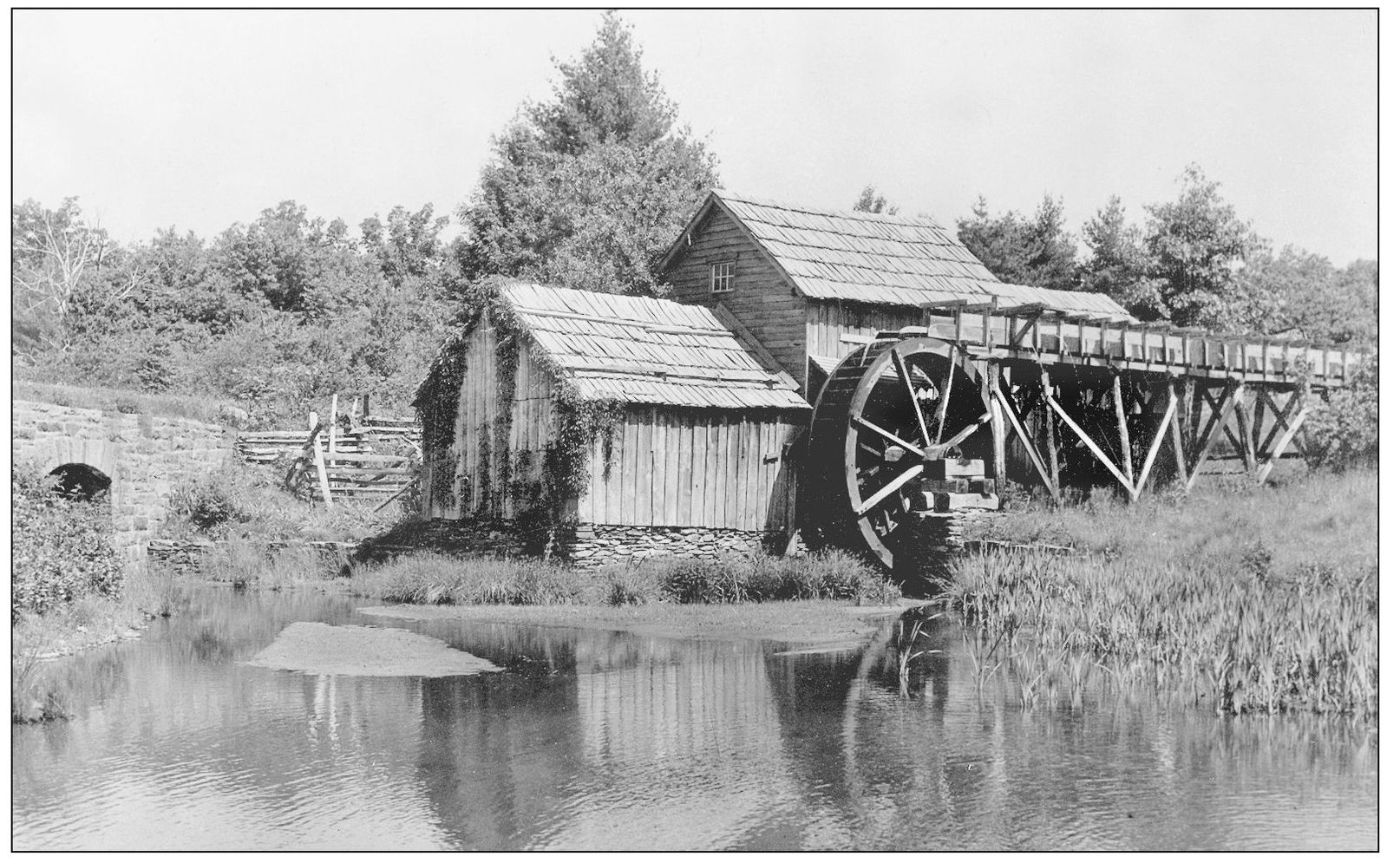
MABRY MILL POND. The National Park Service added the pond in front of Mabry Mill. What a great addition! Many great photographs have been taken with the pond. A rustic stone-covered bridge carries the road within feet of the mill and pond. The sides of the arch stand straight and are not curved. (Courtesy of the Blue Ridge Parkway Archives.)
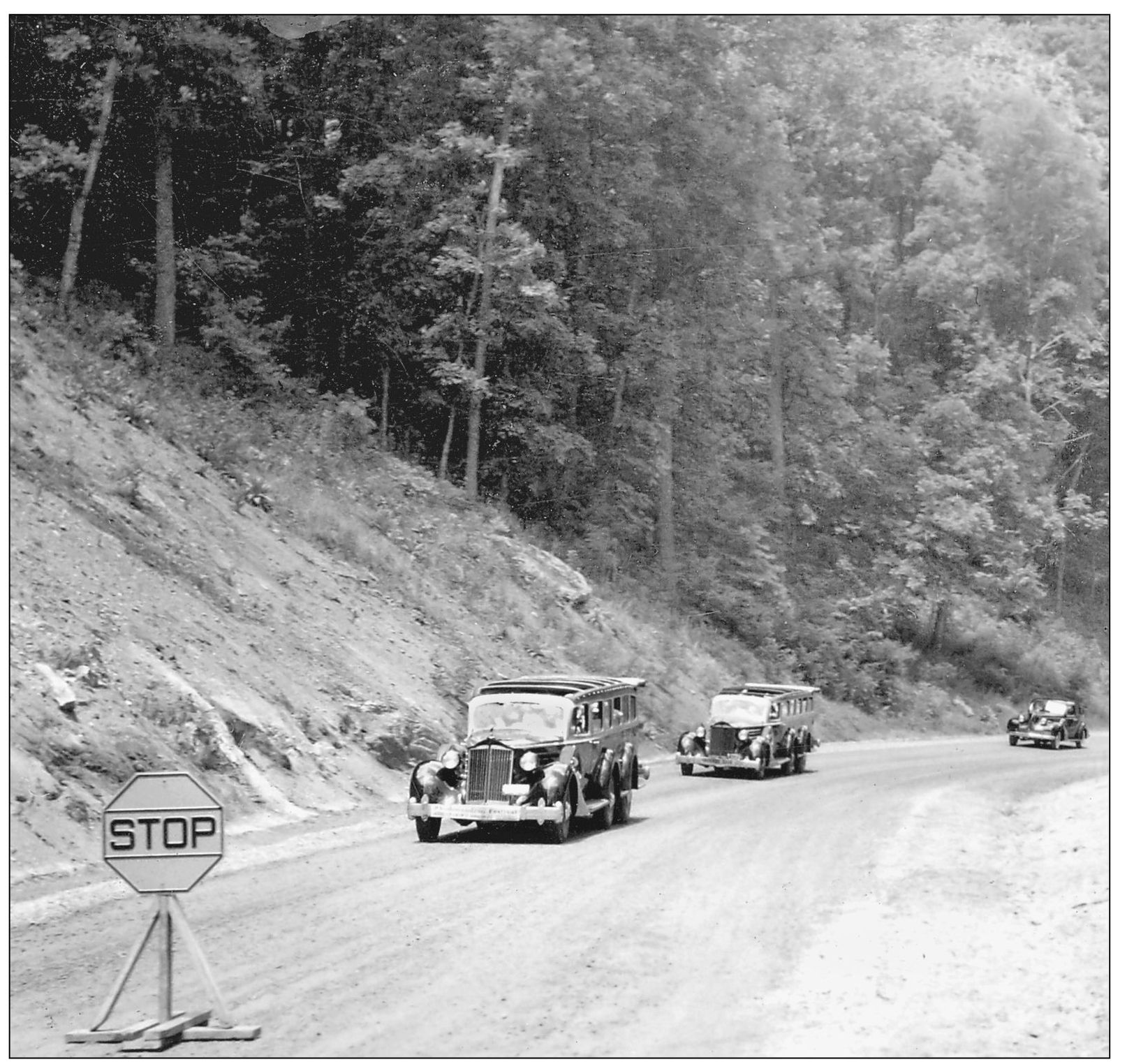
MAXIMUM LIMIT BUSES. Checking stations were used in the early days of the parkway. Charter buses were only allowed with permits. This wonderful photograph was taken in July 1939 near milepost 360. Mount Mitchell is near milepost 360, which is a popular destination boasting the highest peak east of the Mississippi River. During the 1920s, buses began to replace streetcars because of the mechanical problems of the cable cars, which were also limited geographically. Thomas Buses of North Carolina is but one example; they produced their first school bus in 1936. The buses pictured here held between 30 and 40 people and were built sometime in the 1920s or 1930s. Notice these buses have three axles and probably were produced by a division of General Motors called Yellow Coach. The first 50-passenger bus wasn’t developed in the United States until 1948. The parkway today is bus accessible, but large coach buses must have a special permit. (Courtesy of the Blue Ridge Parkway Archives.)
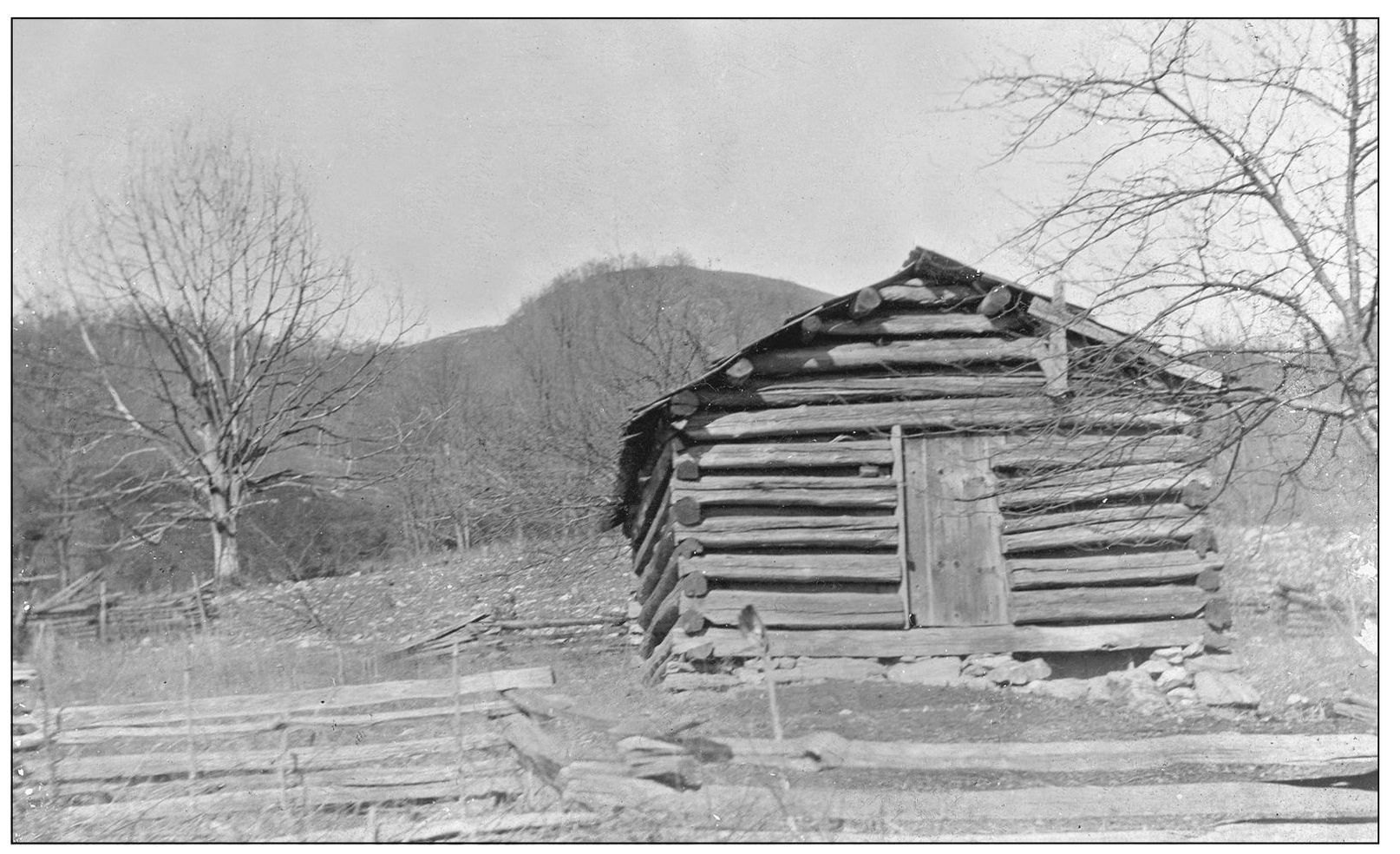
ORLEAN HAWKS PUCKETT OUTBUILDING. This is a real-photo postcard of what was likely Orlean Puckett’s corncrib, which dates back to the 1800s. She and her husband, John Puckett, were married before the Civil War. “Aunt” Orlean took to midwifery in her mid-forties. She is well known for delivering over 1,000 babies during her lifetime. (Courtesy of the Blue Ridge Parkway Archives.)
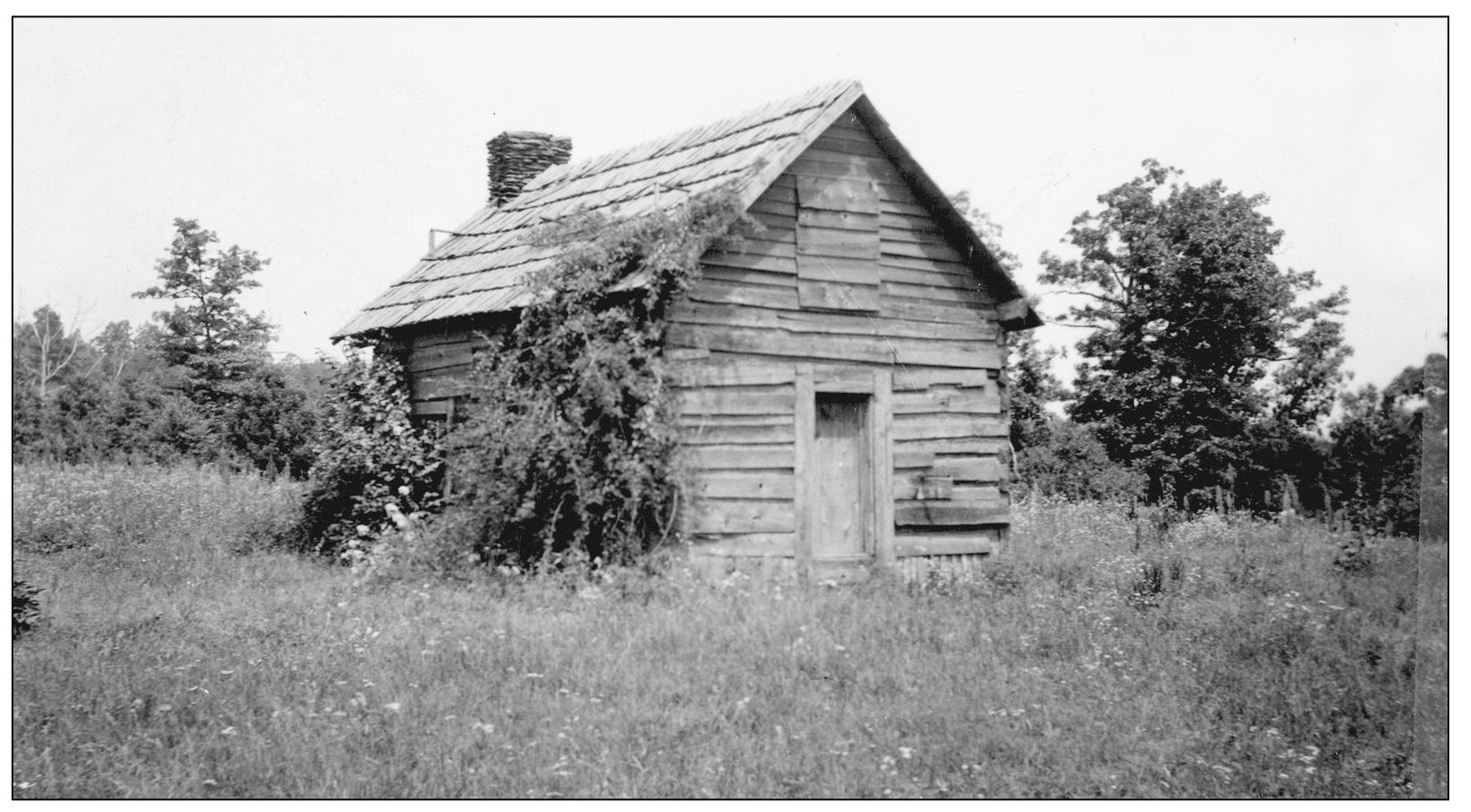
RETAINED PUCKETT CABIN IN 1939. This cabin was retained by the Department of the Interior to tell the story of Orlean Puckett. Taken on July 25, 1939, this photograph shows that the cabin was in great condition with weeds growing up on the sides. Puckett was a midwife who ironically lost all 24 of her own children before they reached toddler age. (Courtesy of the Blue Ridge Parkway Archives.)
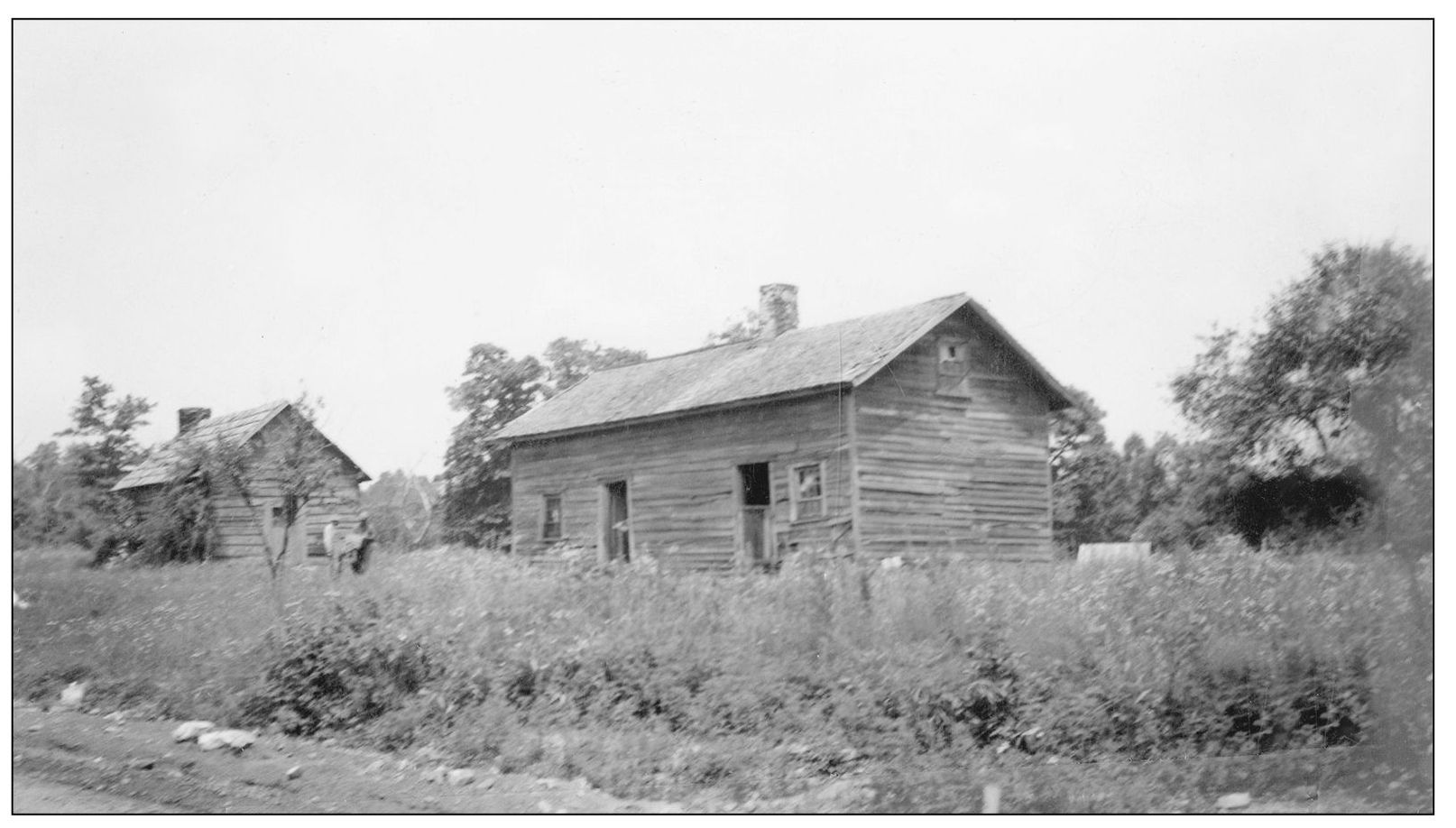
PUCKETT BUILDING GROUP IN 1939. This photograph shows other buildings that existed on the Puckett property. Orlean lived here until the parkway bought her property and construction began. She died one year later. Even in snow and ice, she never missed a birth. She hammered nails in her shoes to grip the ice. (Courtesy of the Blue Ridge Parkway Archives.)
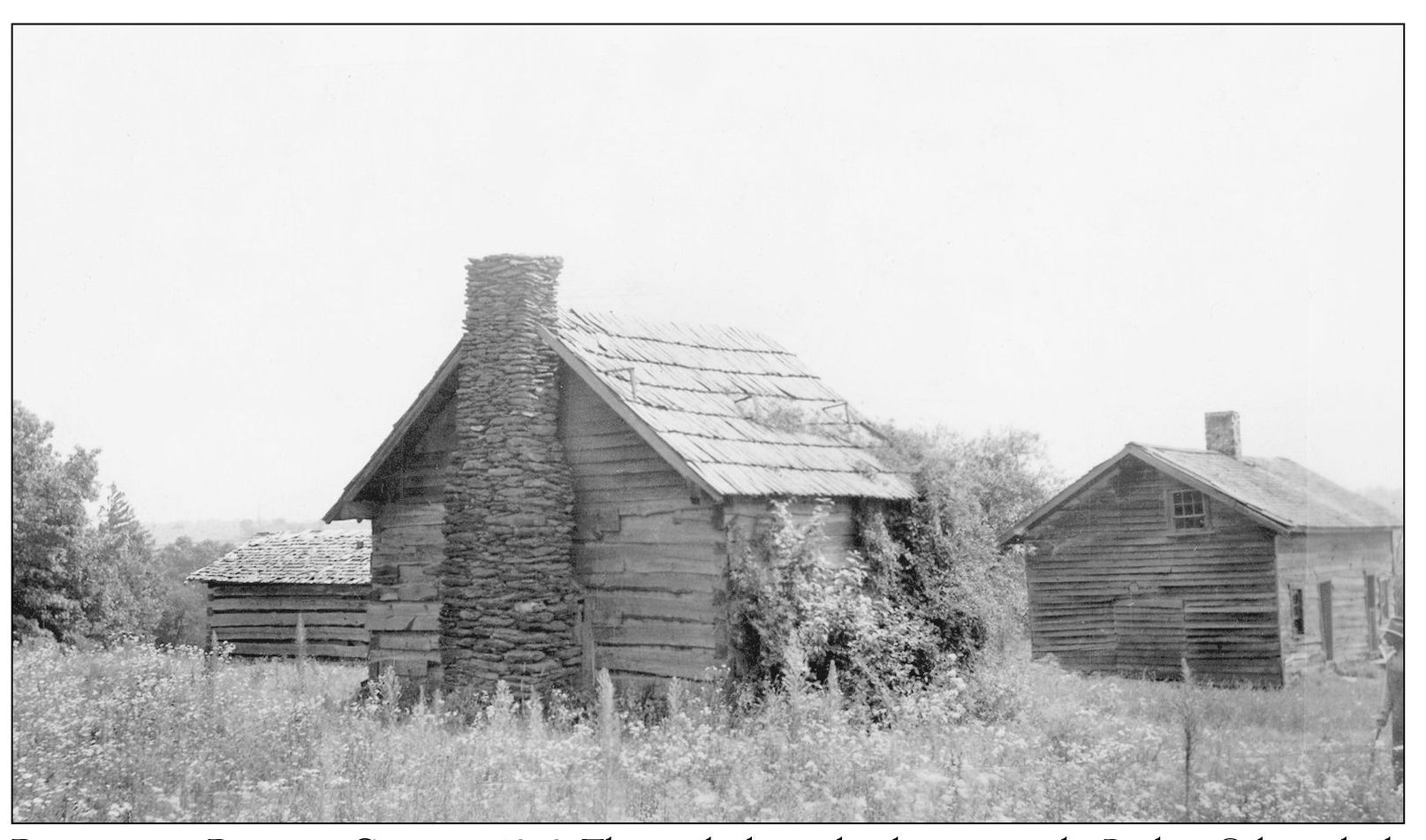
REAR OF THE PUCKETT CABIN IN 1939. This angle shows the chimney on the Puckett Cabin, which was laid by hand during construction before the Civil War. Stones were gathered from around the property and strategically placed into the cabin. This property was purchased in 1939, and Orlean Puckett was given only 30 days to vacate. (Courtesy of the Blue Ridge Parkway Archives.)
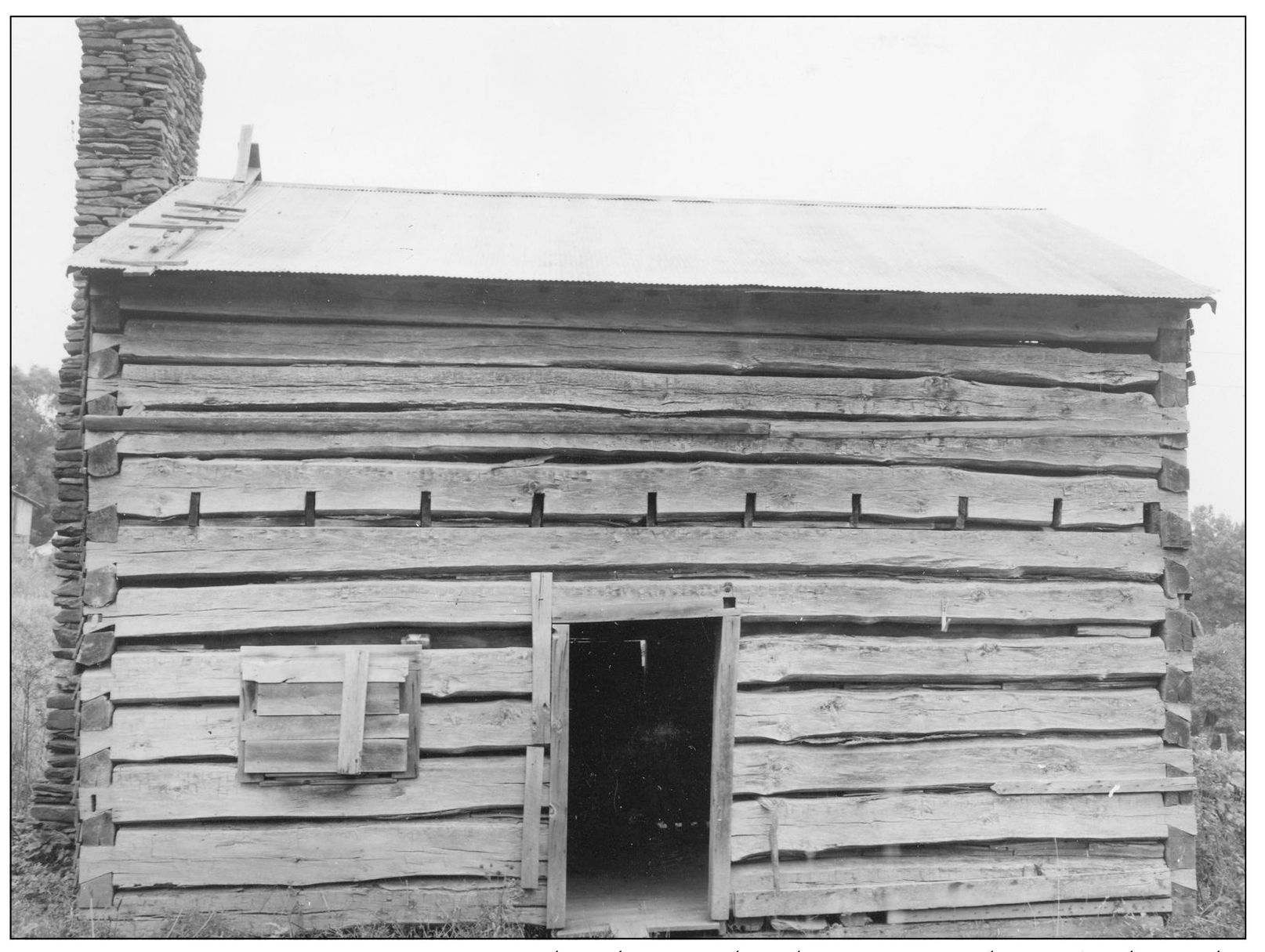
CLOSE-UP VIEW OF PUCKETT CABIN. This photograph, taken in September 1953, shows the hand-hewn logs of the Puckett Cabin after restoration. Purchased in 1939, the cabin was completely disassembled and then reassembled. Renovations in 1976 included a new shaker shingle roof. When it was first purchased, a tin roof was placed on the cabin. (Courtesy of the Blue Ridge Parkway Archives.)
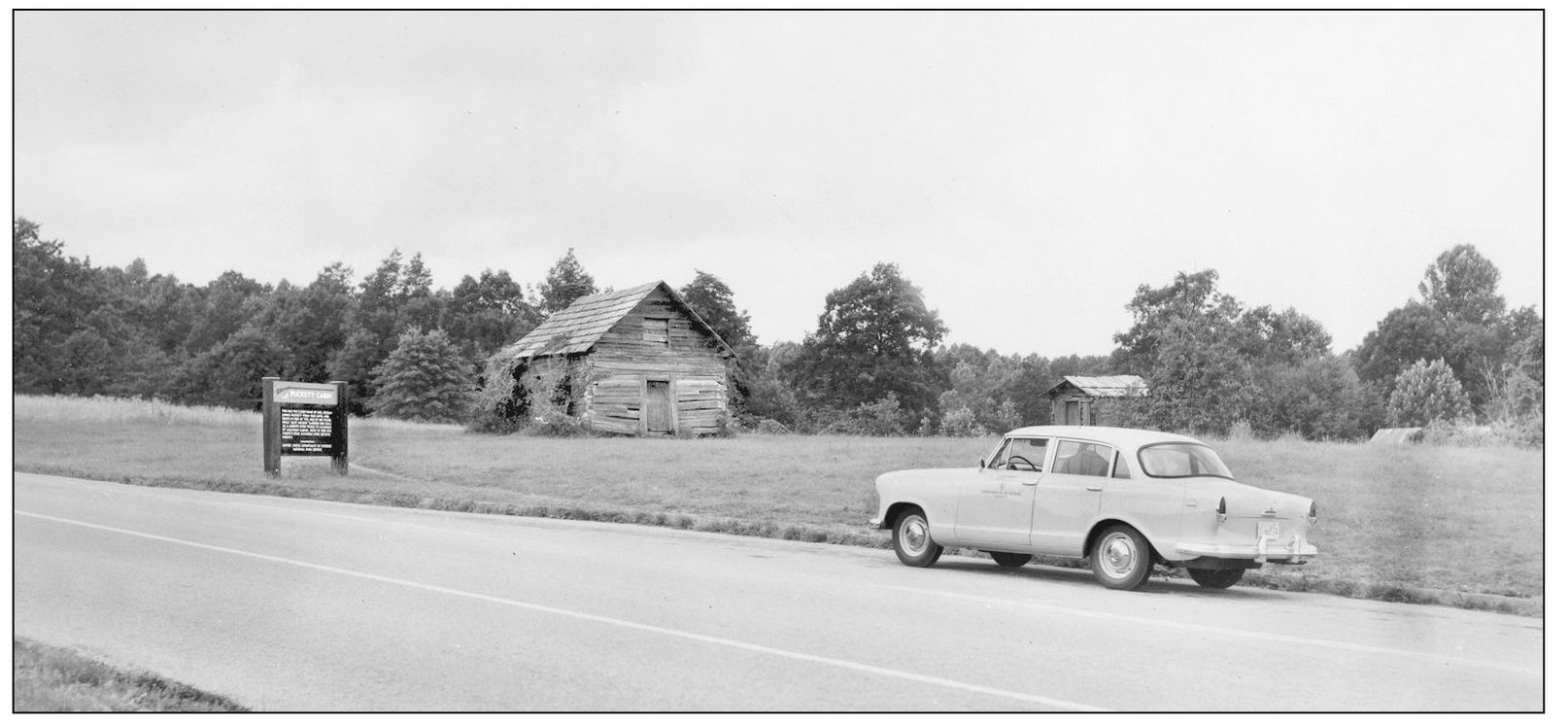
MILEPOST 189.8, PUCKETT CABIN. On July 18, 1960, this photograph was taken of a visitor and interpretation board at Puckett Cabin, a popular stopping point on the Blue Ridge Parkway in Carroll County, Virginia. Only a foot path led to the cabin in 1960. Today a parking lot, a split-rail fence, and other interpretive signs guide the visitor through Orlean Puckett’s life. (Courtesy of the Blue Ridge Parkway Archives.)
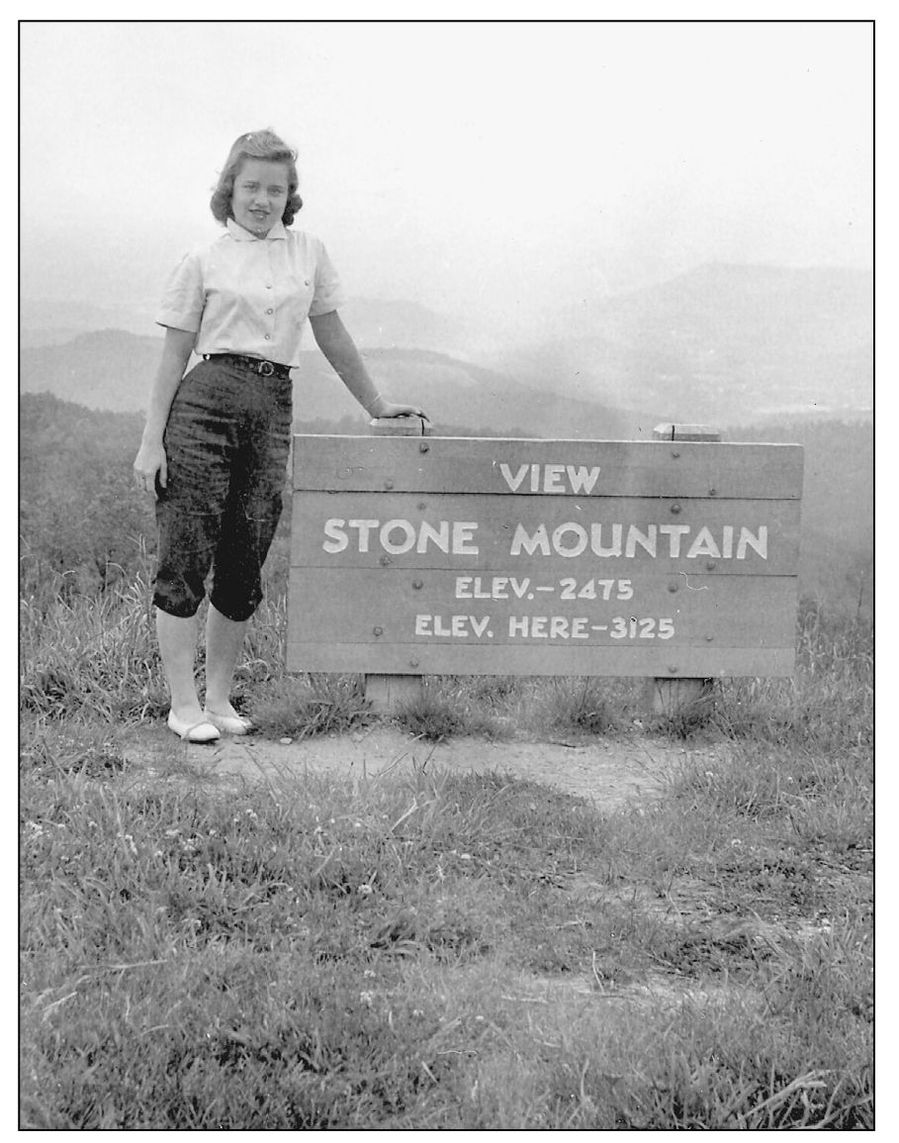
STONE MOUNTAIN “BALCONY.” In the 1940s, interpretive signs were placed at each overlook, naming the overlook and stating information about the scene. Local residents often called them “balconies.” Overlooks were carefully chosen during the initial surveys. This photograph was taken sometime in the 1950s at the Stone Mountain Overlook in Alleghany County, North Carolina. (Courtesy of a private collection.)
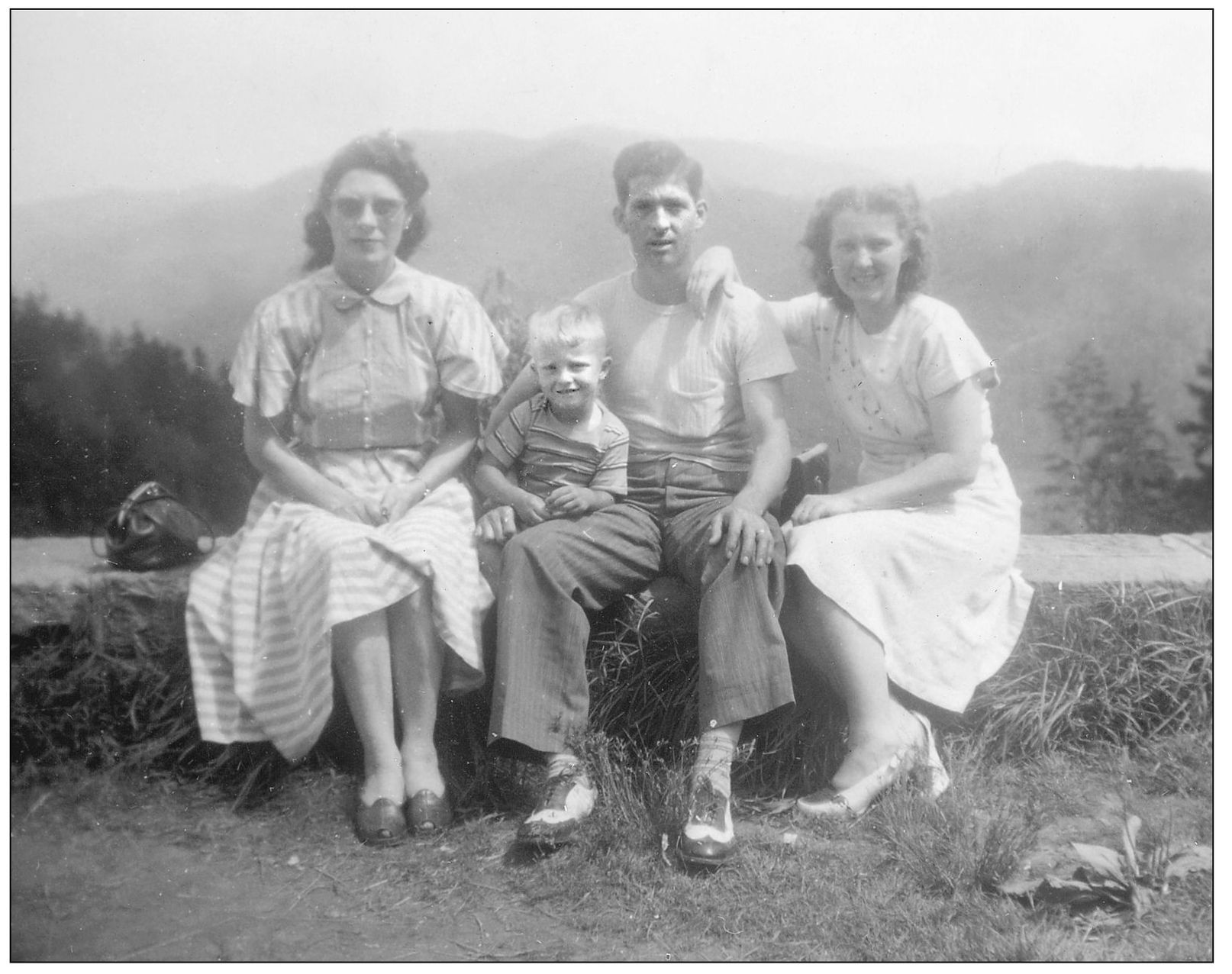
FAMILY IN WESTERN NORTH CAROLINA. This appears to be the primary type of overlook with a stunning vista. In the late 1950s, vacations along the Blue Ridge Parkway included many beautiful family photographs with scenery behind. Retaining walls were built during the early stages of parkway construction. Covered with local stone, the walls were to blend into the scene. (Courtesy of a private collection.)
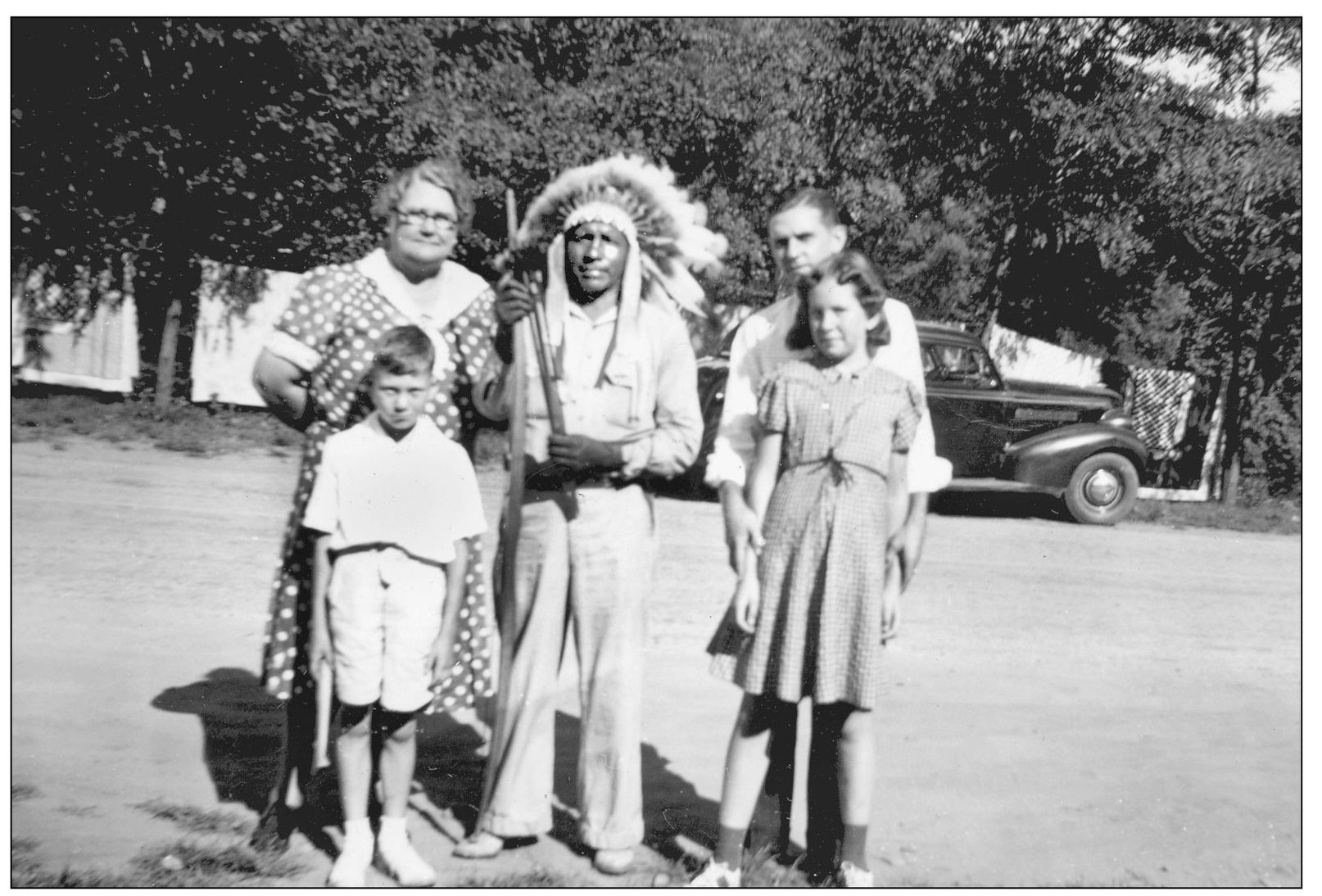
CHEROKEE VACATION. After more than five years of debate, in February 1940, the Ridge Route was accepted by the Cherokee Tribal Council as the path to be taken by the Blue Ridge Parkway. They received $40,000 for the right-of-way through the reservation, with hopes of a start to ending their economic depression. (Courtesy of a private collection.)
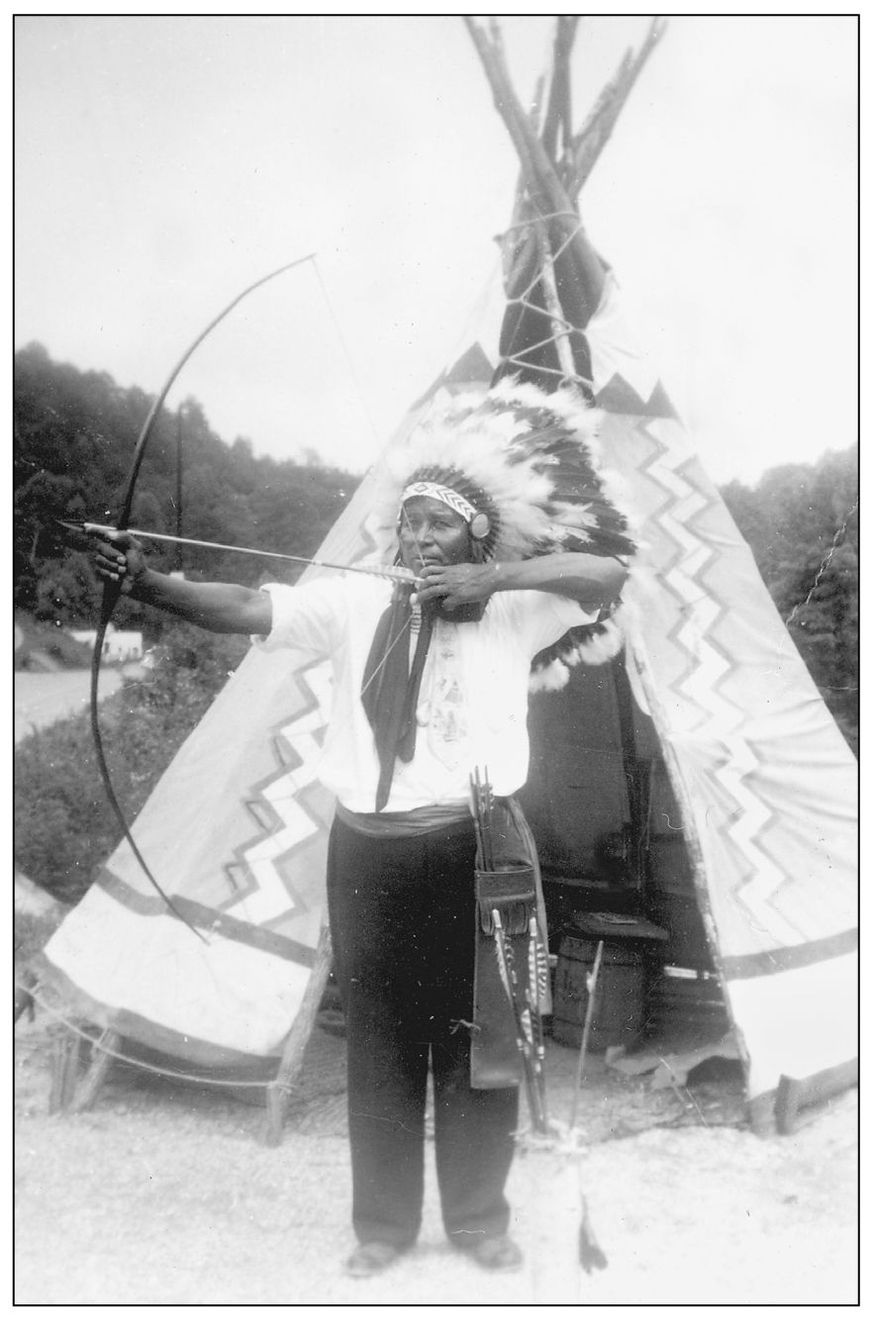
CHEROKEE CHIEF. The Cherokees opened up their reservation to the public in hopes of economic progress. They were encouraged by the Bureau of Indian Affairs after many years of oppression to demonstrate their crafts and share their heritage. In the 1950s, with the onset of television, interest grew in the Native American culture. (Courtesy of a private collection.)
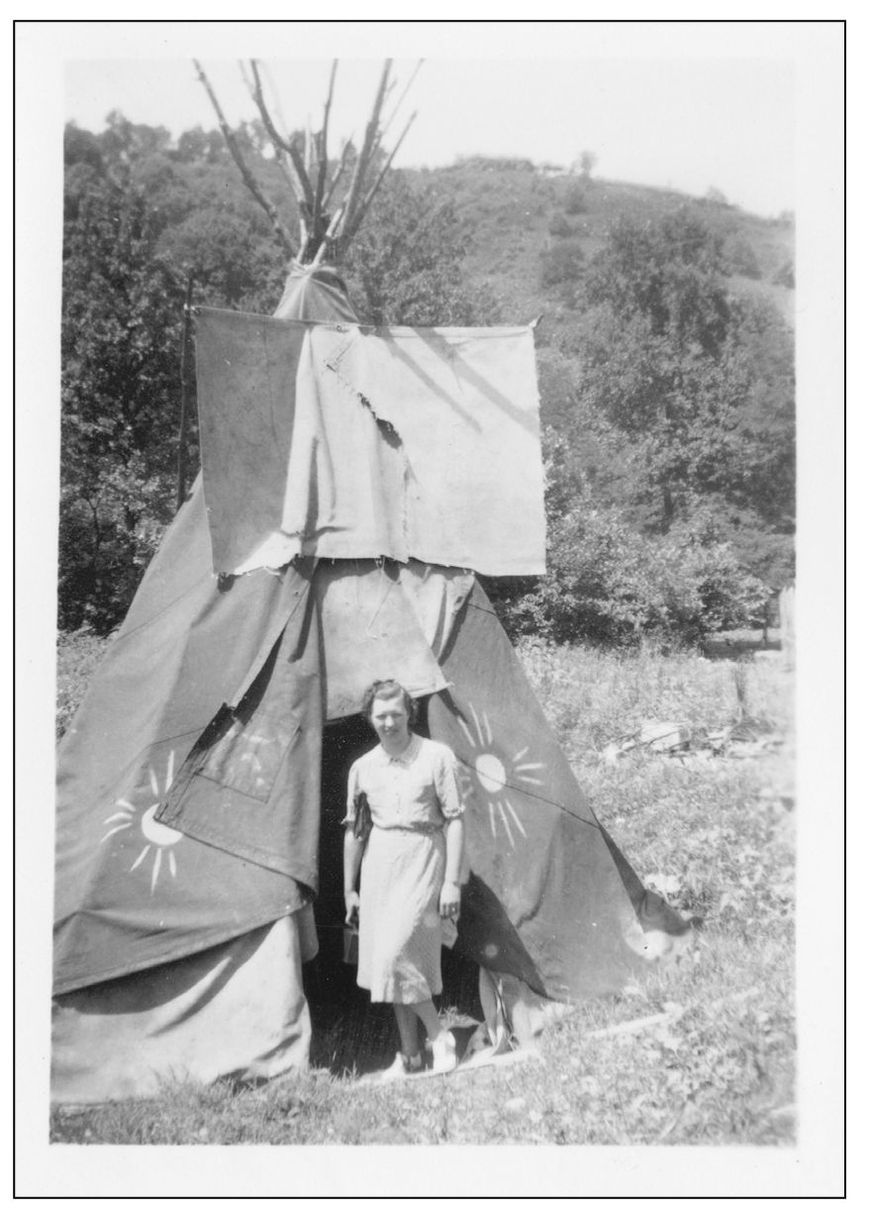
SUNSHINE TEEPEE. Exploring teepees became a favorite pastime of travelers in the 1950s. With the expansion of television and the Western genre, Americans became very interested in the Native American culture. Original teepees were assembled with poles and tanned leather. (Courtesy of a private collection.)
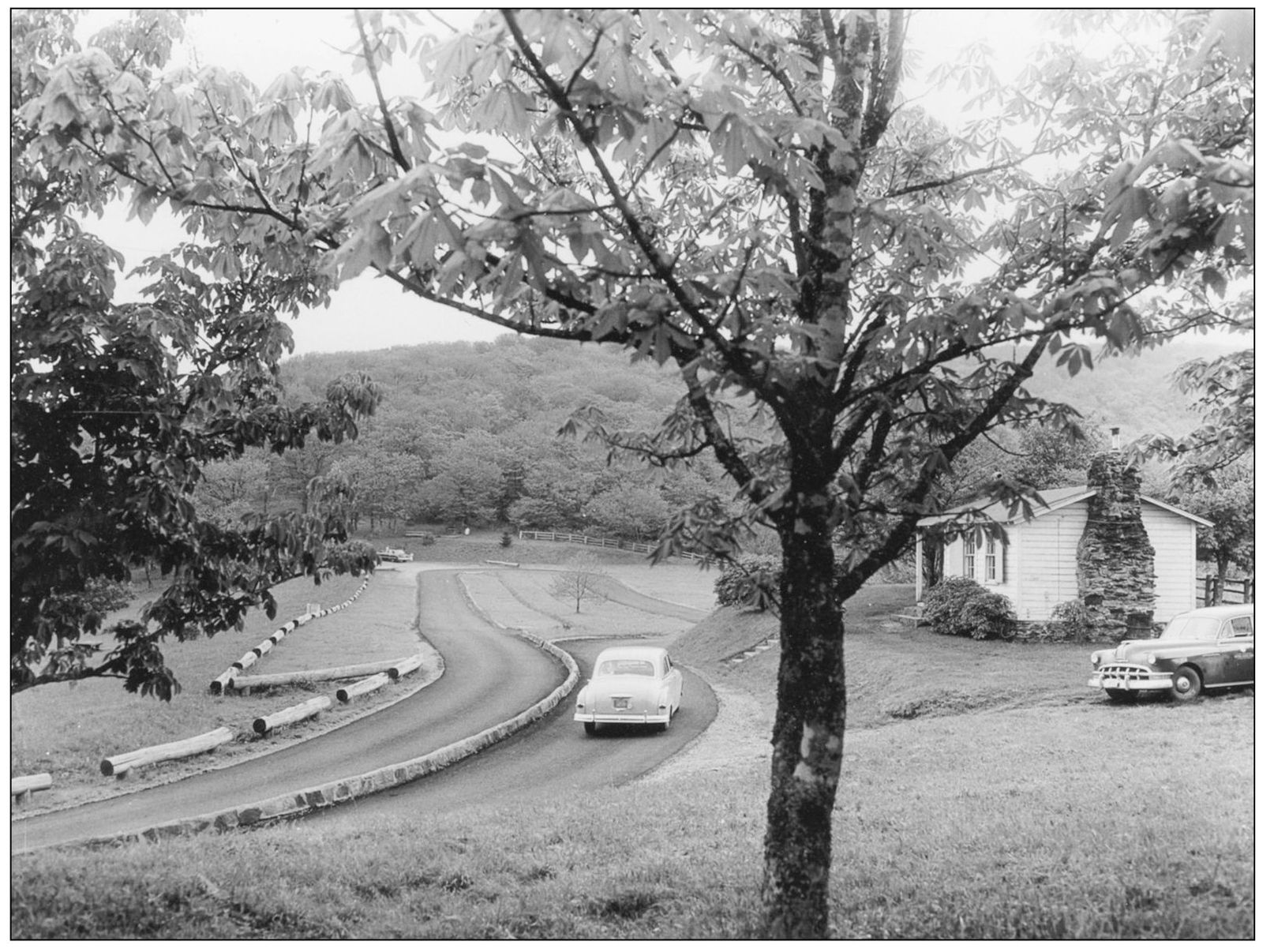
PICNIC AREA IN 1953. Comfort stations and picnic areas (similar to the one pictured below) were built in the early stages of the construction by the CCC. They would have landscaped the picnic area and built the facilities and tables. A contractor would have paved this winding road. (Courtesy of a private collection.)
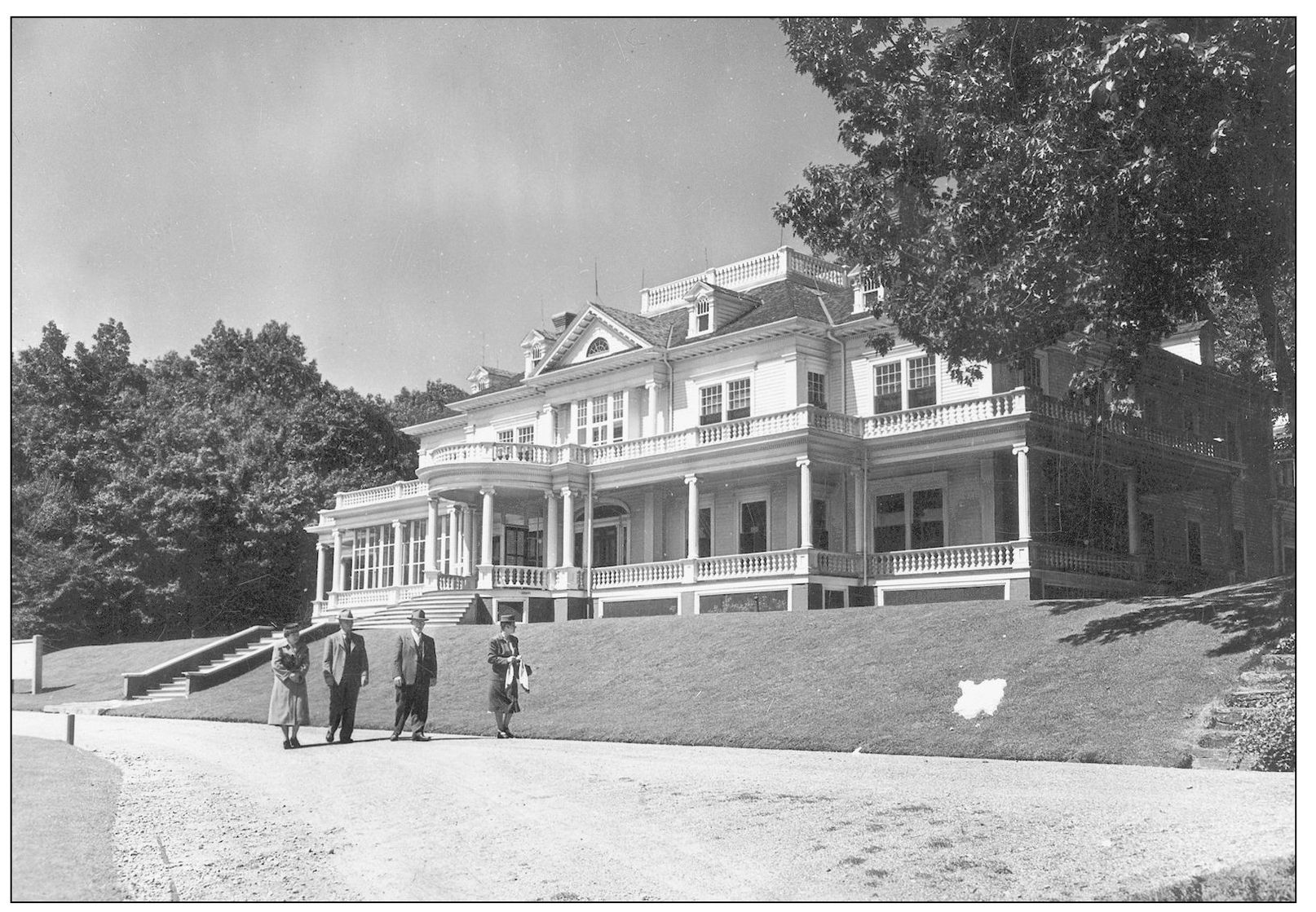
MOSES CONE HOUSE IN 1953. Bertha Cone, widow of Moses Cone, donated her late husband’s estate, Flat Top Manor, to the state upon her death in 1947. The state deeded the property to Blue Ridge Parkway. Today it houses the Southern Highlands Crafts Guild. (Courtesy of the Blue Ridge Parkway Archives.)
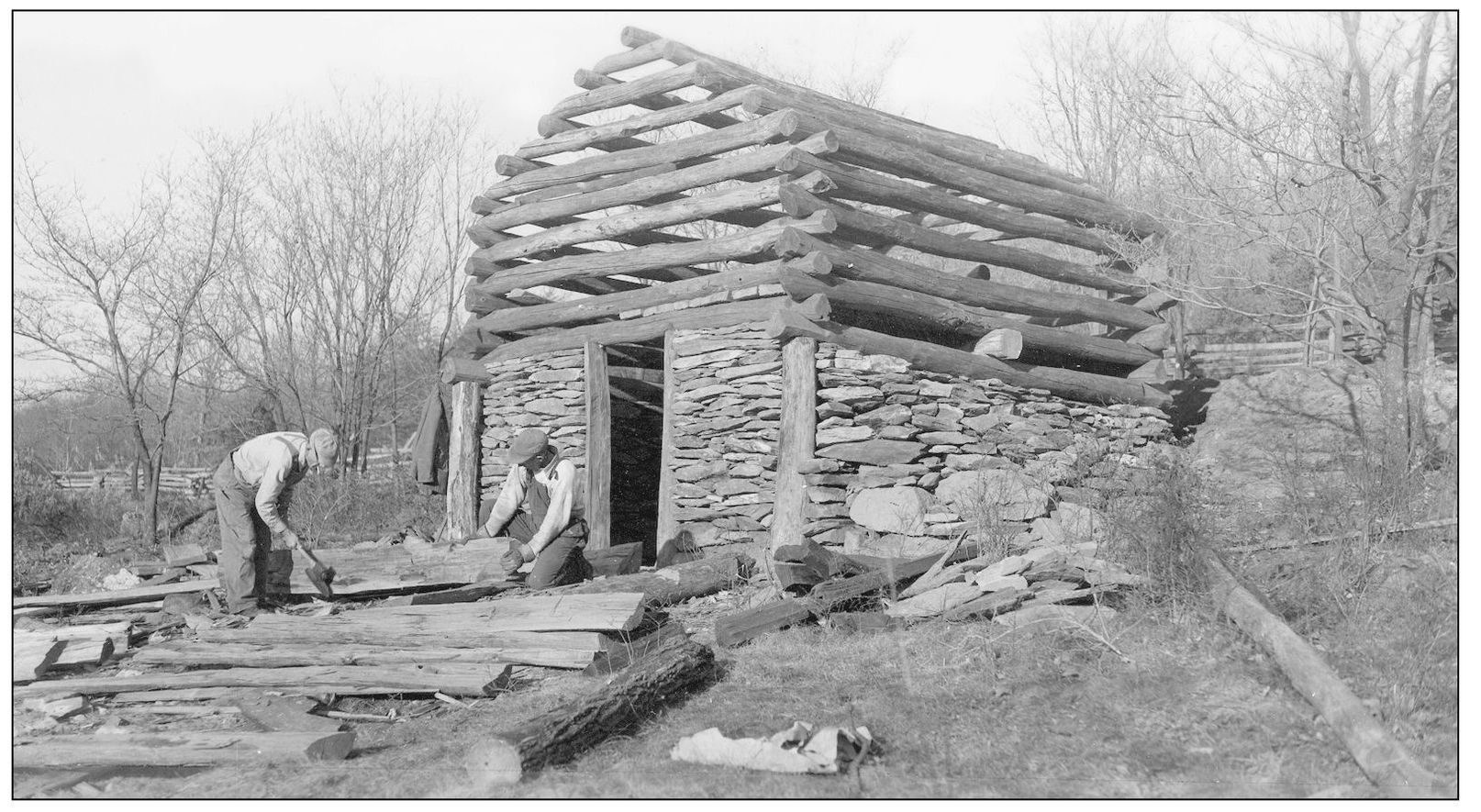
ROOT CELLAR RESTORATION IN 1953. Milepost 5.8 boasts the Humpback Rocks Center. Logs were hand cut by local artisans for the restoration. The 795 acres of Humpback Rocks recreation area are notable for the rock fence, reputedly built by slaves of a plantation owner, which separates the gap and Greenstone Overlook. During summer months, demonstrations of folk crafts are held in the buildings. (Courtesy of the Blue Ridge Parkway Archives.)
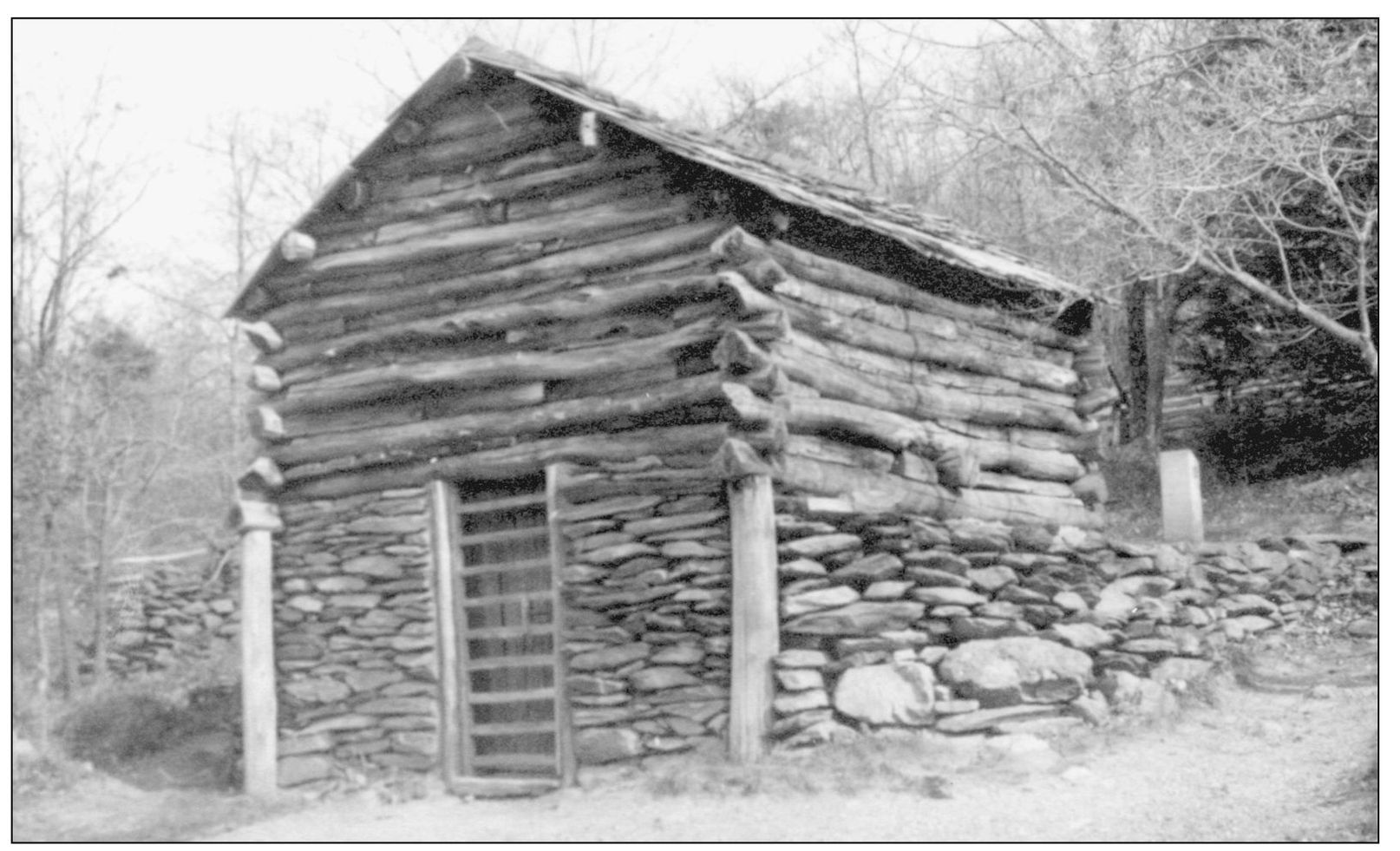
ROOT CELLAR IN 1953. The root cellar was a necessary underground room suitable for storage of consumable goods. Until the advent of electrical refrigeration, the root cellar was the most predominant means of storage of vegetables and meats. Wine cellars are a specialized type of root cellar in which the goal is consistent or reduced ambient temperature. (Courtesy of the Blue Ridge Parkway Archives.)
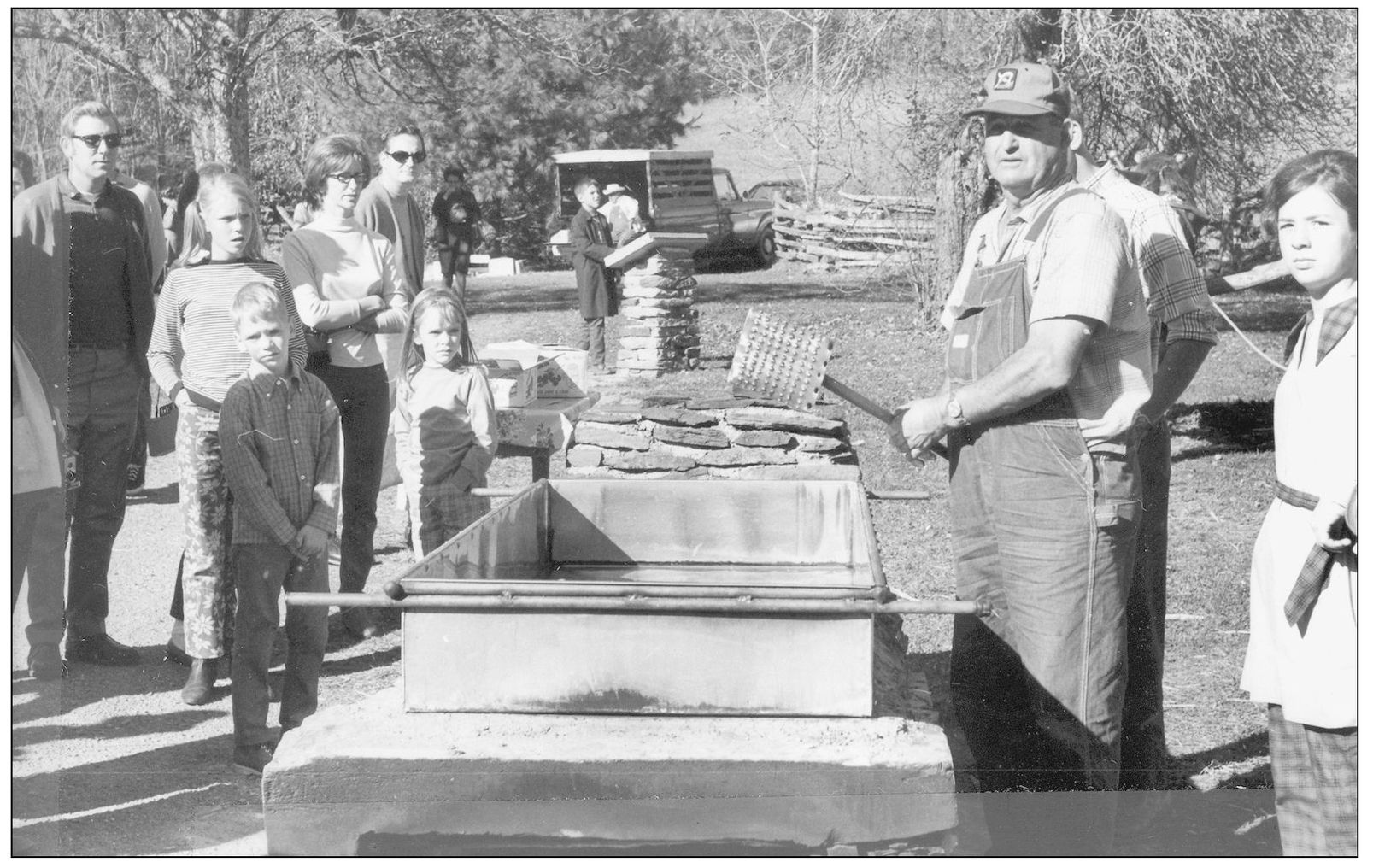
SORGHUM MOLASSES DEMONSTRATION IN 1969. Fall brings the tradition of preparing molasses. Molasses is a dark brown, thick syrup by-product from the processing of the sorghum cane. The quality of molasses depends on the maturity of sorghum, the amount of juice extracted, and the method of extraction. (Courtesy of the Blue Ridge Parkway Archives.)
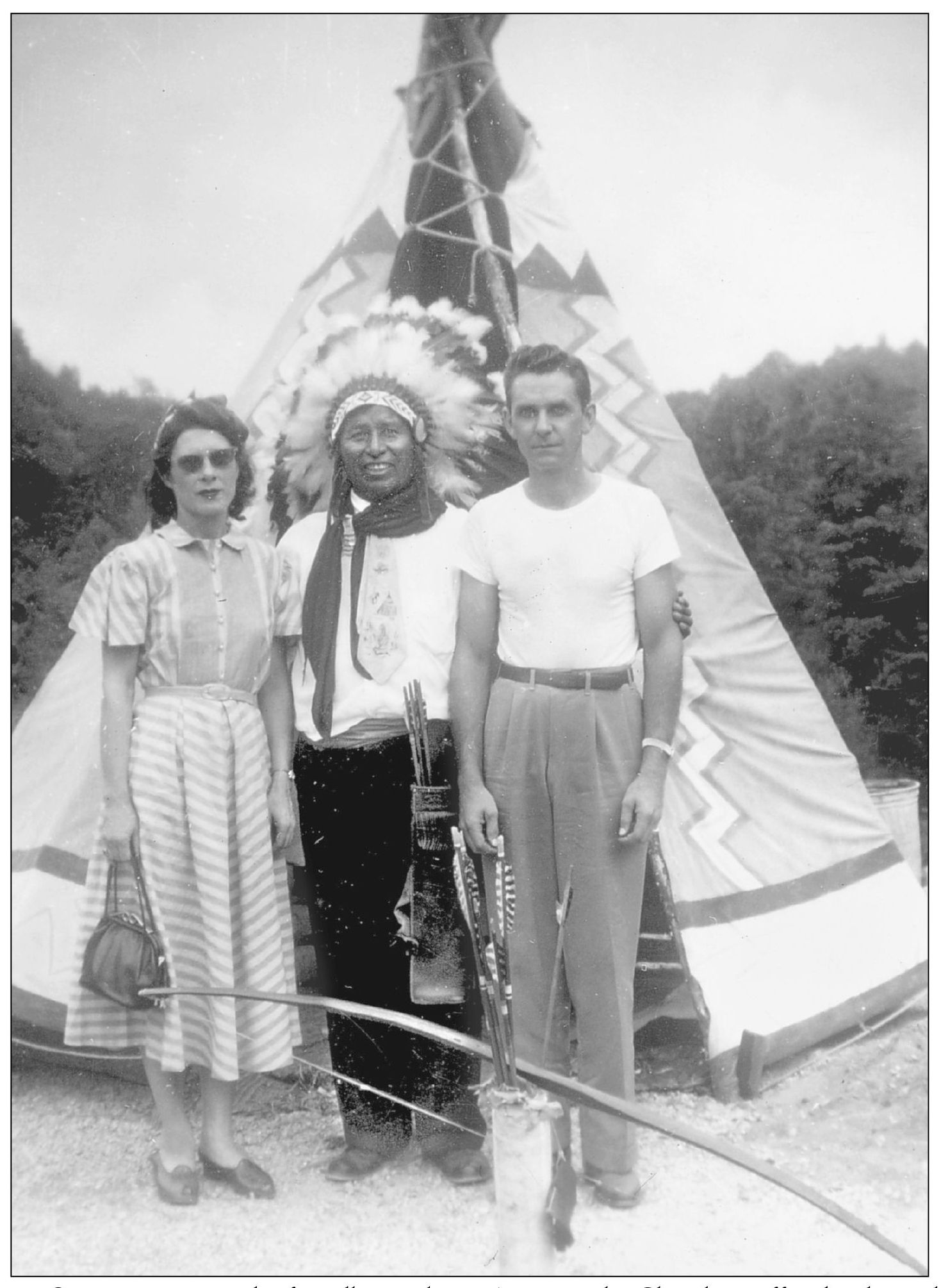
HAPPY CHIEF. Known as the friendliest tribe in America, the Cherokees offered to have their photographs taken with visitors as a vacation memento. Two Cherokee, North Carolina, principal attractions for roadsiders are its bear pits and Chief Henry, the world’s most photographed Native American. Chief Henry (Henry Lambert) has appeared on at least 25 postcards over the past 50 years. In 1998, Henry had his golden anniversary posing. Vacationers expect to see a Native American in feathers, but the Cherokee only wore feathers in ceremonies. Cherokees never wore huge feather headdresses like the Woodland or Plains people and only wore a feather in time of war or during a ball game similar to lacrosse—and then it was just a single feather. The women used white turkey feathers when making a tear dress. (Courtesy of a private collection.)